
SEPTEMBER 2023 VOL 1023 ISSUE 7 portstrategy.com
OR
OPERATOR SELECTION MINEFIELD MORE PUBLIC SECTOR $ TACKLING LITHIUM-ION FIRES
Ukraine Concessions | STS: Remote Operation Bandwagon Rolls on | Electric Product Launches
NEARSHORING
‘NO-CHINA’






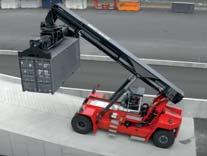





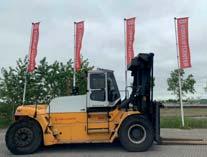

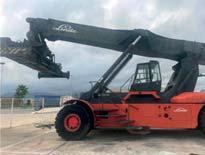
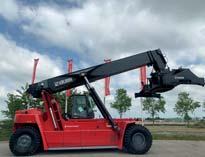




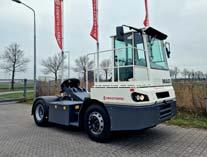

 MIKE MUNDY
MIKE MUNDY
Cost Conscious Times: But $ Not The Whole Story
Recognition of the increasing cost of employing China as a manufacturing base is progressively striking home and is one of the catalysts inducing companies to look for new manufacturing locations. This is effectively a NO to China in favour of a new location offering lower cost production but also other potential benefits such as a less troubled political climate. The alliance with Putin, sabre rattling over Taiwan and trade and other conflicts with the USA are all seen as potential disruptors to the uninterrupted flow of business – see p22.
Recent supply chain problems, especially those during and immediately following the Pandemic, are also major catalysts to the idea of near shoring – reducing the length of supply chains and the risk of associated supply chain problems. Mexico is a typical alternative location for US-based companies pursuing this path.
Keeping costs down and efficiency levels up are primary goals.
The cost factor is also to the fore in the article on p26 which discusses the challenges posed by the rapid pace of containership design over the last decade or so and the onslaught of today’s inflationary times. There appears to be a strong case for a rethink on conventional approaches to funding infrastructure works due to these and other influential factors.
Then there is the other end of the spectrum, i.e. when one party comes along to offer a pile of cash as part of a government-togovernment deal aimed at securing port sector business opportunities along with more in other sectors. In these days when money is tight for governments as well as companies and individuals, it is very tempting for governments to sign up to such a deal to realise instant benefit but whether it is a wise course of action or not remains to be seen. As the article on p20 highlights, government-to-government deals can lead to political conflict – a point that seems to be proven in Dar es Salaam where a proposed deal between Tanzania and Dubai, involving port company and logistics operator DP World, is giving rise to serious concerns being raised at every critical level including the threat of national demonstrations – see News p6.
The Tanzania Port Authority (TPA) appears to be pursuing a similar path – it is sending out signals that Adani Port & SEZ could be a possible candidate to operate its Dar es Salaam container terminal, which would suggest DP World has not achieved exclusivity, although this could of course just be a smokescreen with it eventually likely to follow the will of its political masters. Either way, pursuing what can be termed a selective process for terminal operator appointment, as opposed to a much more competitive open tender, as recommended by independent entities such as the World bank, could turn out to be ‘short-term gain for long term pain.’
It is also important to recognise in this process that the structure of the international container terminal operating sector is changing – there are now big differences between the players – and it is fundamentally important to get up-to-date in this context before settling on any specific party – see p20.
The international magazine for senior port & terminal executives
EDITORIAL & CONTENT
Editorial Director: Mike Mundy mmundy@portstrategy.com
Features Editor: A J Keyes keyesj186@gmail.com
Consultant Editor: AndrewPenfold andypenfold@yahoo.com


Regular Correspondents: Felicity Landon; Stevie Knight; Ben Hackett; Peter de Langen; Charles Haine; AJ Keyes; Andrew Penfold; Oleksandr Gavrylyuk Johan-Paul Verschuure; Phoebe Davison
Production David Blake, Paul Dunnington production@mercatormedia.com
SALES & MARKETING t +44 1329 825335 f +44 1329 550192
Media Sales Manager: Arrate Landera alandera@mercatormedia.com
Marketing marketing@mercatormedia.com
Chief Executive: Andrew Webster awebster@mercatormedia.com
PS magazine is published monthly by Mercator Media Limited, Spinnaker House, Waterside Gardens, Fareham, Hants PO16 8SD UK t +44 1329 825335 f +44 1329 550192 info@mercatormedia.com www.mercatormedia.com
Subscriptions
Subscriptions@mercatormedia.com
Register and subscribe at www.portstrategy.com
1 year’s print subscription £295.00
1 year’s digital subscription with online access £228.50
For Memberships and Corporate/ multi-user subscriptions: corporatesubs@mercatormedia.com
©Mercator Media Limited 2023. ISSN 1740-2638 (print) ISSN 2633-4232 (online). Port Strategy is a trade mark of Mercator Media Ltd. All rights reserved. No part of this magazine can be reproduced without the written consent of Mercator Media Ltd. Registered in England Company Number 2427909. Registered office: c/o Spinnaker House, Waterside Gardens, Fareham, Hampshire, PO16 8SD, UK.
For the latest news and analysis go to www.portstrategy.com SEPTEMBER 2023 | 3
There are key drivers associated with the growing exodus from China of manufacturing companies which is, in turn, promoting port development in alternative locations. There are also cost and shipping system development factors at work which promote the case for a rethink on the financing of infrastructure and dredging works. But perhaps most striking is how the international container terminal operator sector can now be identified with diverse categories of operator – a reality that parties looking to appoint terminal operators would do well to take account of
PORTSTRATEGY INSIGHT FOR PORT EXECUTIVES
VIEWPOINT

Remote working Discover the power of automation and remote control for your container handling operations. www.liebherr.com Container cranes Liebherr Container Cranes Ltd. Killarney, Ireland Tel: +353 (0)64 6670200, sales.lcc@liebherr.com



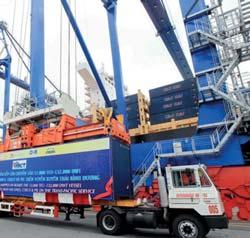


For the latest news and analysis go to www.portstrategy.com SEPTEMBER 2023 | 5 Weekly E-News Sign up for FREEat: www.portstrategy.com/enews CONTENTS SEPTEMBER 2023 is a proud support of Greenport and GreenPort Congress GreenPort magazine is a business information resource on how best to meet the environmental and CSR demands in marine ports and terminals. Sign up at greenport.com The Congress is a meeting point that provides senior executives with the solutions they require to meet regulatory and operational environmental challenges. Stay in touch at greenport.com Online portstrategy.com 5 Latest news 5 Comment & analysis 5 Industry database 5 Events Social Media links LinkedIn PortStrategy portstrategy YouTube On the cover PSA control centre for remote quayside crane operations. Remote operations are identified as a primary route to improved crane performance and particularly in conjunction with working higher capacity vessels. Already enjoying a fast take-up, further impetus to the adoption of the system is expected with the influx of the large number of high-capacity vessels that will join the fleet over the near-term NEWS FEATURE ARTICLES REGULARS 18 The New Yorker FMC to Smooth Box Flow 18 The Analyst Bold but Missed Opportunity? 19 The Economist Positive Asia Prospects 19 The Strategist Panama Canal Problems 20 Tread Carefully Operator Selection Minefield 22 Near Shoring or “No China” Alternative Strategies 24 Climbing the Ladder The Cambodia Option 26 More Public Sector $ A Path to Greater Eiciency 29 Readying Concessions Ukraine’s Concession Programme 30 ETS: Trade Diversion Risk? ETS Impact Assessed 32 Portside Solution Arguing the Case for M2H2 34 Lithium-Ion Fires The Risks & Counter Measures 36 Electric Domination The New Electric Cargo Handling Products 38 STS Crane Automation Market & Technical Initiatives 41 Peterhead Plan Energy Transition Ambitions 46 Postscript Container Shipping Fleet Development SEPTEMBER 2023 VOL 1023 ISSUE 7 portstrategy.com Ukraine Concessions STS: Remote Operation Bandwagon Rolls on Electric Product Launches NEARSHORING OR ‘NO-CHINA’ OPERATOR SELECTION MINEFIELD MORE PUBLIC SECTOR $ TACKLING LITHIUM-ION FIRES 16 Controversy Stirring Dar Es Salaam Ructions 16 High Noon Adani Judgement Nears 16 Dar Debacle Adani in the Mix 17 Traction Gained Simandou Iron Ore Project 17 Rail Developments Sagunto Inner Rail Moves 19 H2-Hub™ Deal H2U and Vopak Collaborate 19 Integrated JNPT New Rail Yard Links 11 Long Beach Building Supply Chain Information 11 BlueTechPort Launched Barcelona Innovation Space 13 LA Power Tests Carbon-Free Ocean Energy 13 Embrace Partnerships Digital Catapult Solutions 15 Hydrogen for Big Red Cummins Engine Integration 17 Innovative Bagging New IMGS Solution 17 Upbeat Konecranes Increases Predicted for 2023
GOVERNMENT-TO-GOVERNMENT DEAL IN DAR ES SALAAM STIRS CONTROVERSY BRIEFS
Nigeria Initiative
Nigeria has established the Marine and Blue Economy Ministry as a wholly separate entity to the Transport Ministry. This follows on from recognition of the escalating requirement to establish a stronger shipping infrastructure. The news was received favourably by the Nigerian Shipowners Association and other industry bodies.
NYK Buys In
NYK has acquired, from Toyota Tsusho Corporation, a 25 per cent stake in PT. Patimban International Car Terminal located at the Indonesian port of Patimban. The port, 120km east of Jakarta, has been developed in successive phases since 2018 with the car terminal now in the process of raising vehicle capacity from 220,000 units/yr to 600,000 vehicles/yr.
QTerminals Rotterdam
Qatar-headquartered
QTerminals Group has concluded the purchase of a 90 per cent stake in Kramer Group, a integrated logistics and container services company, located in the Port of Rotterdam. Kramer Group provides handling and storage, container development and logistics services to the terminals across the Maasvlakte and the Eem-/Waalhaven areas of the port.
AD Ports Invests
AD Ports Group is set to invest in the Multifunctional Marine Terminal in Kuryk Port, Kazakhstan. AD Ports has signed an agreement with Semurg Invest LLP, the terminal owner, under which the two companies agreed to invest in and expand.
The fall out from a move by the Emirate of Dubai to try to secure the management of Tanzania port facilities, including facilities in the main port of Dar es Salaam, continues. Some observers go so far as to suggest it has the potential to derail President Hassan’s re-election beyond 2025.
The root of the problems is the strong resistance being put up to the proposed deal, which would see Dubai-owned DP World step in and takeover key Tanzanian port facilities on a long-term basis. This resistance has been taking place at a very public level with groups known to be opposed to President Hassan taking a leading role but also a wider response from the public and business which is asking fundamental questions about why such a government-togovernment deal needs to be struck and/or why not stick with the conventional arrangement of
As PS goes to press, the release of the findings of the Securities and Exchange Board of India (SEBI) into accusations by US-based Hindenburg Research that the Adani Group is guilty of “brazen stock manipulation and accounting fraud schemes” is imminent.
This follows on from the SEBI requesting 15 more days to complete its inquiry. At this stage it stated that it had “substantially progressed” its investigations =- 17 of 24 investigations were “final and complete” and another completed with an interim report approved by the competent authority.
With the remaining six
government agencies retaining management of the port facilities and concessioning the different business units; container break-bulk and so on?
The government response to this opposition is not helping. Local sources report that this amounts to a crackdown on the opposing voices. Dr Willibrod Peter Slaa, Tanzania’s ambassador to Sweden from 2017 – 2021 is identified as one party recently arrested due to his opposition to the deal with his home subsequently searched. His arrest was preceded by those of other well-known figures and against a background of calls for nationwide mass demonstrations.
From the side of the authorities, there was a stern warning from Camilius Wambura, Inspector General of Police, who stressed that the law enforcement agency will not tolerate anyone “plunging the country into chaos.” He further
noted that actions such as mass demonstrations and calls to bring down the government are treason and cannot be tolerated. The Intergovernmental Agreement between Tanzania and the Emirate of Dubai functions via a document, dated 25 October 2022, and under a heading which states it concerns the Economic and Social Partnership for the Development and Improving the Performance of Sea and Lake Ports in Tanzania Exactly what it covers is not fully known but Prof Makame Mbarawa, Minister for Works and Transport, has said that it will not cover the Tanga, Mtwara, Bagamoyo ports and Dar es Salaam port’s Berths 8-11 as well as the Kurasini oil Jetty (KOJ) one and two, and oil storage facility. This nevertheless leaves plenty of prime facilities in Dar and as such the deal is also open to accusations of ‘cherry picking.’
HIGH NOON FOR ADANI…
investigations, four were reported as under process of approval by the competent authority, one with an interim report under preparation and the other at an ‘advanced stage.’
Speculation is rife as to what the report, being submitted to the Supreme Court, will contain with views spanning the full range of options right through from no negative findings to a hard hitting report.
The report follows hot on the heels of the resignation of Deloitte, the Adani Ports division’s auditor, citing the lack of a wider
audit role as a reason. The net effect of this has been to provide new energy to the Adani Group – Hindenburg Research controversy, and particularly as a result of the fact that Deloitte identified certain transactions that it had concerns about which Adani did not want to independently look into.
As of mid- August, it was estimated that shares of Adani’s 10 listed companies had recouped around US$47 billion in value having lost US$150 billion of their joint value in the wake of the Hindenburg report.
ALSO A PLAYER IN THE DAR DEBACLE…
The Adani Ports and SEZ (APSEZ) division is additionally noteworthy today for its interest in securing the concession for the Dar es Salaam container terminal – a prize which DP World is also known to have a strong interest in (see story top of page).
The Tanzania Port Authority (TPA) has acknowledged that it is aware of Adani’s situation with
Plasduce Mbossa, Director General, TPA saying publicly: “These are only allegations… We cannot make a decision until the claims are proven.”
The TPA has itself drawn criticism for fielding a selection process for the terminal operator which is based on talking only to select parties rather than launching a broad-based
competitive tender process, the more conventional and proven route for terminal operator selection. This action promises to further push under the microscope Tanzania’s actions with regard to its key port facilities and especially as the port of Dar es Salaam functions to serve not just the Tanzania hinterland but key landlocked countries surrounding it.
PORT & TERMINAL NEWS
6 | SEPTEMBER 2023 For the latest news and analysis go to www.portstrategy.com
SIMANDOU IRON ORE EXPORT PROJECT: PROGRESS ON RAIL AND PORT CAPACITY
Rio Tinto and the Simfer joint venture (Simfer) have reached an important milestone by concluding key agreements with the Republic of Guinea and Winning Consortium Simandou (WCS) on the trans-Guinean infrastructure for the Simandou iron ore project. This involves the construction of a 600-kilometre rail system running from Simandou via Forécariah, Kassa and Nialinko to a new export terminal located in the port of Morebaya in southeastern Guinea.
As a result, the proposed development of the world’s biggest untapped iron ore mine moved a step forward. The Simandou project in Guinea is understood to contain some of the richest iron ore deposits anywhere in the world, but the development has struggled to gain traction for several years due to various disputes over ownership and infrastructure, plus frequent political changes in Guinea.

However, there have been a series of agreements signed between the partners and the government, which appear to be giving the project a fighting chance of success.
The infrastructure capacity, including the 600km of rail lines necessary to transport the mined iron ore to Morebaya for export, the new port facilities, and the associated costs will be shared equally between Simfer, which is developing blocks 3 and 4 of the
Vadhavan is Go
A new deepwater port at Vadhavan, India has reportedly received approvals to commence construction. The new facility is 120 miles north of Nhava Sheva Port (JNPA) but despite Indian government approval for a public-private partnership (PPP) deal in 2020, the US$9bn project stalled due to mandatory delays.
The new port is reported as providing a capacity of 15 million TEU in Phase One, going up to 24 million TEU.
Sagunto Inner Rail Project Advances
The Port Authority of Valencia (PAV) is advancing the development of the inner rail network of the Port of Sagunto by requesting technical support for site management, health, and safety coordination.
This project is a key part of PAV’s rail traffic strategy, which has total estimated costs of more than €240 million (US$304 million). It supports the port authority’s objective of decarbonising port activities and combating climate change and becoming an emission-neutral precinct by 2030.
Simandou project, and WCS, which is developing blocks 1 and
2. China Baowu Steel Group has also previously entered into a term sheet agreement with WCS that may see it partner in the WCS scope for blocks 1 and 2 of the Simandou mining concession and the infrastructure joint venture.
To put the size of the project into perspective, Rio Tinto maintains that its share of the cost of the overall development will be approximately US$4bn. It offers, what is already the world’s second largest mining company, a huge new source of iron ore cargo supply.
Bold Baatar, Executive Committee lead for Guinea and Copper Chief Executive, Rio Tinto, notes: “With these agreements
Electric Barcelona
The government of Spain has awarded APM Terminals (APMT) Barcelona €3.9 million (US$4.3 million) to help finance an electrification pilot project. It includes purchasing five zero-emission electric straddle carriers, four charging stations, civil and electrical works, an IT network, plus all required technology necessary for equipment operations and recharging activities. All electricity comes from renewable sources.
8 The Simandou iron ore project has reached a key milestone according to Rio Tinto, with agreement now reached on the pan Guinea rail system and port capacity required to export ore
we have reached an important milestone towards full sanction of the Simandou project, bringing together the complementary strengths and expertise of Rio Tinto and our partners, the Government of Guinea and Winning Consortium Simandou, for the infrastructure that will unlock this world class resource. Simandou, the world’s largest known undeveloped supply of high-grade, low-impurity iron ore, will strengthen Rio Tinto’s portfolio by complementing our existing Pilbara and Iron Ore Company of Canada products.”
NOLA Funding Boost
A new container terminal project being planned by the Port of New Orleans (NOLA) has had funding reinstated. The news follows a recent contentious decision by legislators in Louisiana to remove financial support. According to released budget documents, the port has already spent US$55 million on land acquisition and US$6.5 million for design and will now receive a further US$13.5 million to cover expenses for the ‘final design phase.’
The development of the Port of Sagunto’s inner rail network is estimated to cost €17.5 million (US$22 million). It entails an 11-month schedule and involves the design of an intermodal goods facility with one area for containers and another facility for automobiles.
The tender deadline is September 25, 2023.
PAV has also issued a tender for the provision of a service that maintains the units that monitor the quality of air and other environmental parameters, as part of increasing understanding of emissions generated by port activities. There are two of the environmental control facilities in the Port of Valencia offering a wide coverage of air quality and port noise in real time,
BRIEFS
Pilbara Record
The Pilbara Ports Authority (PPA) which manages the western Australian ports of Ashburton, Dampier, Port Hedland and Varanus Island, has confirmed a record throughput for the fourth consecutive fiscal year. A three per cent rise over the previous fiscal year has been achieved, with 752.4 million tonnes recorded in 2022-23, valued at an estimated AU$164 billion (US$110.3 billion). PPA processed more than 43 per cent of worldwide iron ore traffic.
For the latest news and analysis go to www.portstrategy.com SEPTEMBER 2023 | 7 PORT & TERMINAL NEWS
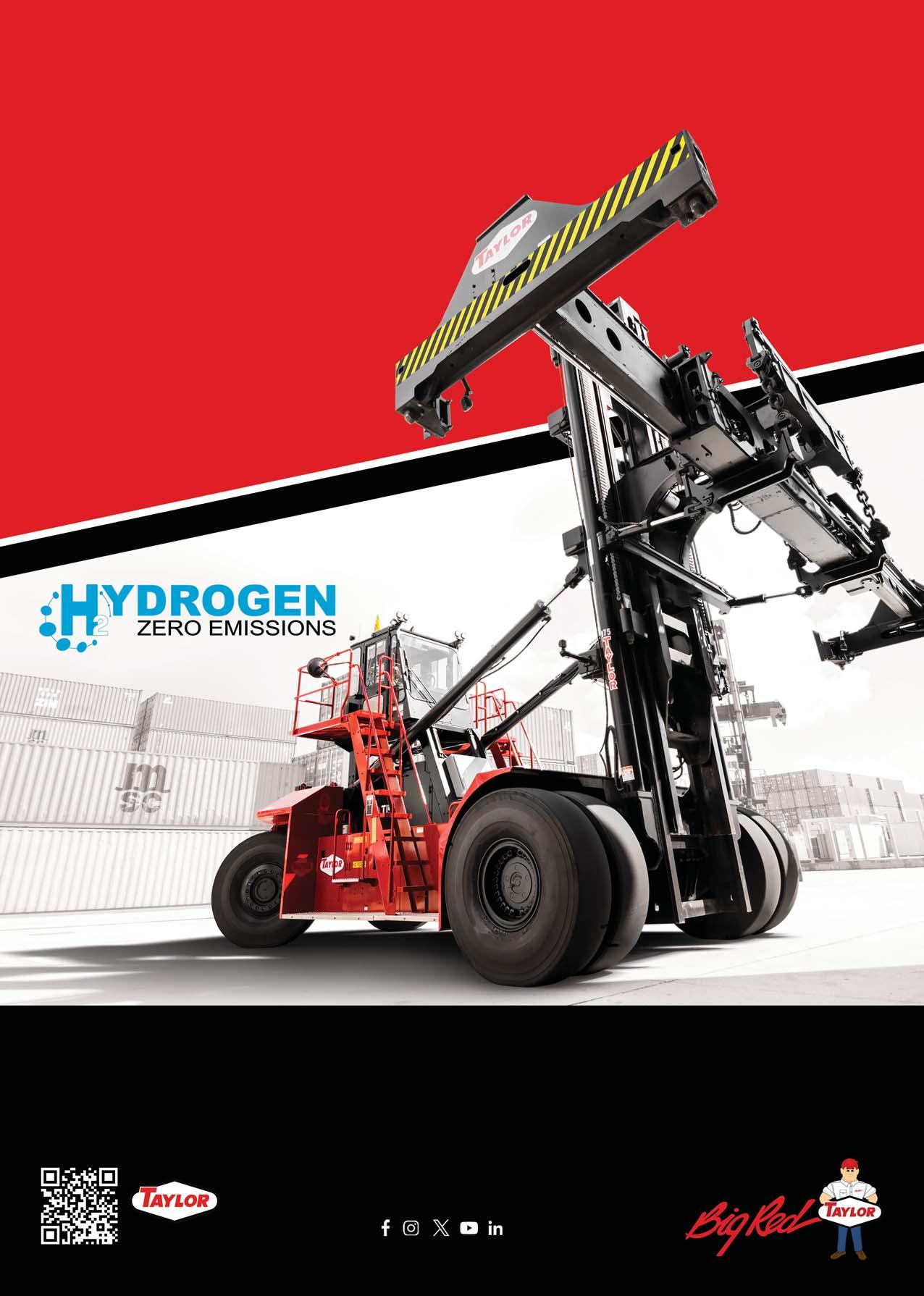




GLADSTONE GREEN HYDROGEN AND AMMONIA PARTNERSHIP
New Integrated Rail Yard for JNPT
Nhava Sheva Port (JNPT) is supporting all five container terminals with a new rail yard capable of handling doublestack freight trains.
JNPT states that the new rail facility is a “state-of-the-art” operation for the port’s marine terminals, with the aim of “streamlining operations and enhancing efficiency.” It is also a key part of the Dedicated Freight Corridor (DFC) being developed in India. The new yard has three 1500m rail lines for double-stack container trains, with two for loading and unloading of containers, and one is for engine turnaround of electric locomotives.
The Hydrogen Utility® (H2U) and Vopak Terminals Australia (Vopak) are collaborating in relation to H2U’s H2-Hub™ Gladstone project. This new multi-billion renewable energy complex is planning to produce green hydrogen and green ammonia at a proposed site in Gladstone, Queensland. Gladstone has been identified as one of seven clean hydrogen hubs across the country in Australia’s National Hydrogen Strategy.
H2U has recently announced a number of planned strategic collaborations and green ammonia offtake with partners in the domestic and export markets, including:

5 Orica Australia, the world’s largest provider of commercial explosives, operating the nearby Orica Yarwun Manufacturing Facility,
5 Mitsubishi Heavy Industries (MHI Group), one of the world’s
Westports AGVs?
Westports Malaysia is investigating the viability of using electric Automated Guided Vehicles (AGVs) in the future. The operator has been requesting manufacturers and suppliers of electric AGVs to submit a proposal for a system covering capacity, navigation capabilities, safety features, and the ability to connect with the current infrastructure. New charging solutions that maximise AGV working time are also a key area of interest.
leading industrial groups, spanning energy, smart infrastructure, industrial machinery, aerospace and defence.
5 Korea East-West Power (Korea EWP), one of six key power generation companies in Korea and is a wholly owned subsidiary of Korea Electric Power Corporation or KEPCO, and the operator of the multi-GW Dangjin Power Generation complex.
Paul Kanters, Managing Director of Vopak Terminals Australia, points out the collaboration with H2U is a natural progression of Vopak’s participation in the development of a global green ammonia value chain: “This partnership fits well within the Vopak strategic goal to accelerate towards New Energies. We are excited to help shape a sustainable future by developing infrastructure
Nigeria LNG Support
Onne Multipurpose Terminal (OMT) is supporting Nigerian LNG (NLNG)’s Train 7 expansion project at NLNG’s facility in Bonny Island. OMT discharged critical project components from three boats on Berth 10 of the Federal Ocean Terminal in partnership with Horatio Ltd., Chairborne Global Services Limited, Kerry Logistics, and IO Materials Services. The US$10bn Train 7 expansion aims to increase Nigeria’s LNG production from 22 million to 30 million tonnes per year by 2027.
solutions for new vital products, focusing on zero- and low-carbon hydrogen, ammonia, CO2, long duration energy storage and sustainable feedstocks.”
H2-Hub™ Gladstone is the largest green hydrogen and green ammonia development in Queensland, with 3 GW in planned electrolyser capacity and over 1.7 million tonnes per year of planned green ammonia production, representing one of the most advanced export projects on a global scale. H2U and Vopak will collaborate with existing partners to progress development of the project, focussing mainly on the Export Terminal of H2-Hub™ Gladstone.
Evergreen Deal
Global container operator, Evergreen, has acquired a 20 per cent stake in Euromax, one of the existing terminals at the Port of Rotterdam in the Netherlands. It is understood that the Taiwanese-headquartered company is likely to have obtained this share from Hutchison Ports and for a reported price of €72.5 million (US$79 million). China’s Cosco is another existing shareholder in the facility.
The Western part of the DFC project is a 1504km broad-gauge freight only connector between Dadri, the busiest ICD in North India, and Nhava Sheva. In addition, on the DFC route it is estimated that wagons can carry freight of up to 81 tons per wagon at a speed of 100km, which includes double-stack container trains, compared with 60 kmph on the normal network.
JNPT states that a primary objective is to target the conversion of truckloads to rail to alleviate road congestion and improve container dwell times.
For the first quarter of fiscal year 2023-2024 (April-June 2023), JNPT handled 1.52 million TEU, an increase of three per cent year-on-year. Of this total, rail traffic accounted for a share of 16.6 per cent.
BRIEFS
MSC Withdraws
Mediterranean Shipping Co (MSC) has withdrawn its interest in buying Terminal Darsena Toscana (TDT) at the port of Livorno in Italy. The deal was first announced in January 2023. The exact reasons for the decision are not known, but Luciano Guerrieri, President of the Port System Authority (Adsp ) of the northern Tyrrhenian Sea remains upbeat: “Whatever the reasons that led MSC to withdraw the offer…the port of Livorno keeps its potential intact.”
For the latest news and analysis go to www.portstrategy.com SEPTEMBER 2023 | 9 PORT & TERMINAL NEWS
8 H2U and Vopak Terminals are collaborating on establishing a new multi-billion dollar renewable energy complex in Gladstone, Queensland that will produce green hydrogen and green ammonia
Converting a conventional RTG into an electrical one (E-RTG) means to shut down the diesel generator and to power the RTG with electrical power only – the emission saving, sustainable basis for automation. This is possible with electric power solutions, including E-RTG auto-steering and positioning systems, developed by Conductix-Wampfler: Plug-In Solution, Drive-In Solution, Hybrid Solution, Full-Battery Solution and Motor Driven Cable Reel Solution with CAP - Cable Auto Plug-In.

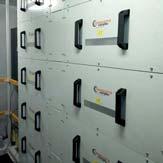





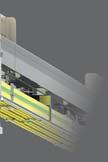







We move your business! www.conductix.com








We add the “E” to your RTG Electrification of Rubber
Gantries
Tyred
E-RTG with Drive-In L Solution and ProfiDAT® E-RTG with Motor Driven Cable Reel Solution and CAP - Cable Auto Plug-In E-RTG with ECO BatteryPack Hybrid Solution
LONG BEACH: BUILDING SUPPLY CHAIN INFORMATION
The Port of Long Beach’s digital Supply Chain Information Highway tool is being updated. Already in its second phase of development, current field testing is fine-tuning its capacity to supply aggregated data that will assist logistics partners in better planning, scheduling, and tracking cargo movement in real time from origin to destination.
Three additional features are being added to the platform to further improve the efficiency and visibility of cargo shipments passing through the port’s facilities:
5 A dashboard designed for beneficial cargo owners allows
customers to access information about the location of their containers within the port complex, highlighting which containers have arrived, which are undergoing inspection by the U.S. Customs and Border Protection, and which are ready to be picked up.
5 A public “track and trace” page allows users to access the most up-to-date information about the status of containers moving through the Port of Long Beach. After inputting a unique tracking number, the user will be presented with a detailed list tracing every step the container goes through from the time it is
Be Pro-Active says Voyager
loaded onto a vessel until it is unloaded on the docks.
5 A public port operations dashboard that contains much of the information currently found in the port’s Weekly Advance Volume Estimate, or WAVE Report, including projected container volumes, vessel calls and turn times for trucks accessing marine terminals. Other participants collaborating in the project include the Port of Oakland, the Northwest Seaport Alliance, the Utah Inland Port Authority, Port Miami, the South Carolina Ports Authority and the Port of New York/New Jersey.
BLUETECHPORT LAUNCHED IN BARCELONA
The Port of Barcelona and Tech Barcelona have launched a new project area in the port that is designed to target all innovative matters related to the blue economy. It is called BlueTechPort.

The new venue has been established at Tech Barcelona’s Pier 01 at the Palau de Mar. It will be “home” for companies and entrepreneurial projects linked to the port across the logistics and blue tourism sectors. It will also cover more specialised activities such as underwater robotics, artificial intelligence relating to the marine environment and the recovery of marine biodiversity made from marine products, amongst others.
Lluís Salvadó, President, Port of
AET Transitioning
Antwerp Euroterminal (“AET”) and Envisiion Digital are partnering to progress AET plans to transition to fully renewable energy sources of wind and solar energy. AET will leverage Envision Digital’s proprietary operating system, EnOSTM, to improve its energy storage management and reduce peak power demand by 25 per cent. This effective management will result in cost savings of up to eight percent on total electricity costs.
Barcelona highlighted the importance of the project at the recent launch ceremony: “All of these sectors spell new opportunities for the maritime and port ecosystem, and at the Port of Barcelona we want to support these initiatives, becoming a benchmark for the blue economy in Europe,” he underlined.
Tech Barcelona is the independent non-profit
Transicold Launch
Specialist provider of intelligent climate and energy solutions, Carrier Transicold, has launched the BluEdge Partner Programme.
It is establishing a global network of BluEdge Partners, expanding its capacity and distribution reach, by approving the sale, installation and commission of the latest telematics technologies, including the Carrier’s Lynx™ digital platform. It offers end-to-end supply chain visibility, real-time monitoring, and improved sustainability.
association that works to consolidate Barcelona as a world-class technological and digital hub. Set up in 2013, it represents more than 1300 companies and has more than 80 partner organisations committed to the project.
API from APMT
Global terminal operator, APM Terminals (APMT), has launched a new Application Programming Interface (API) which allows its customers to track schedules and key milestones for vessels calling to specific terminals. APMT says that ships can be tracked up to one week in the past and two weeks in the future, with provision of real-time and reliable terminal estimated time of arrival/departure and truck appointments.
Operations and demurrage management platform for bulk commodity shipping, Voyager, is suggesting a more pro-active approach to reduce the costs and risks of demurrage. The company says that recent surges in port congestion and supply chain disruptions have generated longer cargo wait times and higher demurrage costs, but feels the position can be changed through the following:
1. Estimate and assess demurrage immediately after the first load port to gain a real-time view of demurrage risk at every stage.
2. Digitalise data to gain granular insight throughout load and discharge activities to streamline demurrage calculations and gain real-time insights.
3. Connect charter party agreements to demurrage logic and understand if any specific contract clauses impact demurrage claims, especially if more costs are incurred at a certain port berth.
Matthew Costello, Voyager co-founder and CEO explains further: “Issues are particularly severe in the bulk shipping sector, where demurrage costs can exceed 20 per cent of the total freight cost for a voyage….by implementing three key Best Practices, companies can significantly reduce the cost of demurrage:”
BRIEFS
OptETruck from PSA
PSA Singapore (PSA) has introduced a new proprietary cloud-based transport management system that employs Artificial Intelligence (AI) to improve haulier efficiencies. Working with Enterprise Singapore, the new OptETruck application generates automatic scheduling via a real-time resource-matching algorithm and predictive modelling to improve resource utilisation and match and recommend tasks to haulers.
For the latest news and analysis go to www.portstrategy.com SEPTEMBER 2023 | 11 DIGITAL NEWS
8 New innovation space at the Port of Barcelona is supporting the blue economy
The European Commercial Marine Awards (ECMAs) ceremony celebrates individuals and innovative companies on Tuesday 11 June.
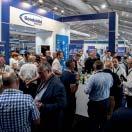

experts, helps visitors to keep up to date with the latest challenges and emerging opportunities.

The Careers & Training Day on Thursday 13 June 2024 delivers a programme focused on careers in the commercial marine industry.





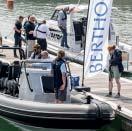
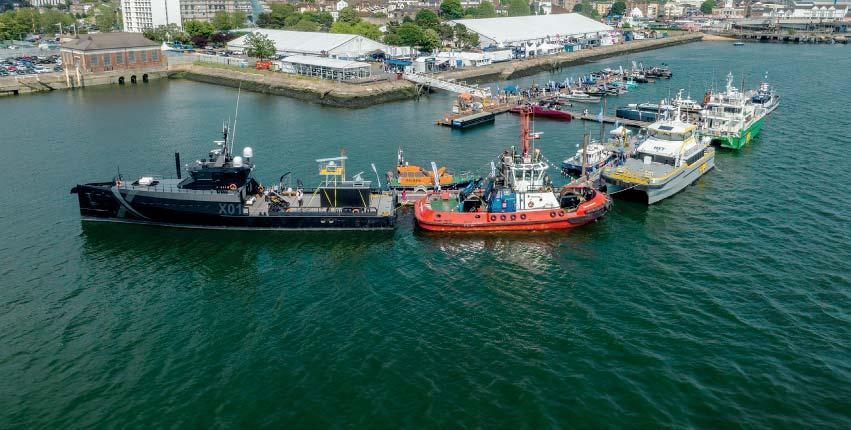
RTE rte-usa.com
for Terminals Discover what 80+ locations worldwide already have. Refrigerated Transport Electronics | New York - Panama | Since 1981
Southampton United Kingdom 11 13 TO
25th
in
25th
workboat
for security interventions
&
Reefer Monitoring
JUNE
Seawork celebrates its
anniversary
2024! The
edition of Europe’s largest commercial marine and workboat exhibition, is a proven platform to build business networks. Seawork delivers an international audience of visitors supported by our trusted partners. Seawork is the meeting place for the commercial marine and
sector. 12,000m2 of undercover halls feature 400 exhibitors speed
and Search
Rescue.
For more information visit: seawork.com contact: +44 1329 825 335 or email: info@seawork.com #Seawork Media partner MARITIMEJOURNAL COMMERCIAL MARINE BUSINESS Speed@Seawork Sea Trials & Conference SIGN UP TODAY
According to the US Energy Information Administration, carbon-free, ocean-wave energy could have supplied about 64 per cent of the country’s utility-scale generated electricity in 2021 – if the power could be captured.

A Stockholm-based startup is planning to test the waters of an untapped source of clean energy at the Port of Los Angeles in California’s San Pedro Bay. Eco Wave Power, which has pioneered wave-power installations in Israel and Gibraltar, has unveiled plans for a pilot wave-power project that will, in coming months, extract power from ocean waves at the AltaSea campus — within the Port of Los Angeles — to generate electricity. The pilot will be Eco Wave’s first in the United States.
Consisting of floating paddles mounted to piers or wharfs, Eco Wave’s technology generates
CARBON-FREE OCEAN ENERGY: L.A. TESTS SCHEDULED
about 21m of wharf frontage, while its energy-conversion unit will sit inside a standard shipping container. The system will provide an installed power capacity of 100kW per hour, enough to potentially power about 80 average homes, although the actual generated power will depend on wave heights and periods.
power from waves as small as 0.5m high. As incoming waves move the paddles up and down, they add pressure to a hydraulic system that, in turn, drives a generator to produce electricity.
8 Electricity could soon be available in the Port of Los Angeles thanks to wave power
With eight paddles, each about the size of a small car, the Los Angeles pilot project will take up
“Wave power is the least intermittent source of renewable energy. As such, wave energy can be used to stabilise other renewable energy sources, such as wind and solar, thus creating stable renewable energy generation,” says Eco Wave founder and CEO Inna Braverman.
DIGITAL CATAPULT EMBRACES PARTNERSHIPS
Digital Catapult has announced a new partnership to solve critical supply chain challenges for companies working in the UK. The company is an authority in the UK relating to advanced digital technology and is now working with five leading technology companies and six pioneering small-to-medium enterprises (SMEs). The new programme is part of the Made Smarter Innovation | Digital Supply Chain Hub initiative that supports and helps overcome issues faced by small-to-medium sized manufacturers across the country. Key objectives and aims include:
5 Significant investment for innovators: Funding the
Syncrotess is Live
The Syncrotess Optimisation Plus solution has been successfully deployed by INFORM at the Norfolk Southern (NS) Rossville Terminal near Memphis (TN). NS has added the Yard Optimizer (YO) modular function to its existing Terminal Operating System (TOS). The YO collaborates with the TOS to designate container storage places and minimise travel distance in/out the stack.
development of advanced digital solutions with up to GBP£100,000 for each tech company to deploy its solutions into the supporting manufacturer’s businesses, who will receive GBP£25,000 to bolster this activity.
5 Solving pressing manufacturing challenges: Improved compliance and export growth for SMEs through extensive use of paperless systems, reduction of textile waste by diverting to secondary markets, better supply visibility for SME automotive manufacturers, and greater analysis of purchasing costs to optimise sourcing.
SDIC Finalists
Eight maritime and logistics technology companies have been selected as finalists for the Standardised Data Innovation Challenge (SDIC). The competition is organised by Smart Maritime Network and ClassNK and retains the support of Japan’s major shipping companies, ‘K’ Line, MOL and NYK line. The finalists get to work with data sets from Japan’s maritime companies via the Internet of Ships Open Platform (IoS-OP).
5 Leveraging cutting-edge emerging technology: Leverage emerging technologies that can be deployed at scale, to sharpen the UK’s manufacturing edge, including solving industrial challenges by utilising artificial intelligence (AI), machine learning, internet of things (IoT) technologies, and blockchain.
Digital Catapult states that the timing of this project comes as a recent survey from Make UK and BDO highlighted the challenges currently facing UK manufacturers, with output growth for 2023 expected to be at -0.3 per cent. Supply chain pressures have been specifically
PET Gets eModal
Advent eModal (AeM) has confirmed intermodal facility, Port Everglades Terminal (PET), is now live with its eModal® platform to power its new gate appointment system. The eModal platform includes AeM’s PreGate and Fee Manager applications, which are integrated into the eModal Community Portal (eCP). The module streamlines processes by increasing cargo visibility, facilitates fee payments, and oversees appointment functions.
outlined as a key challenge for medium-sized firms, with continued disruption and increased costs in the UK and throughout international markets stalling business growth.
Tim Lawrence, Director of the Digital Supply Chain Hub states: “With around 250,000 SME manufacturers in the UK, it is important that the work that we do as part of the Digital Supply Chain Hub backs these organisations as we introduce advanced digital tools to the supply chain. We’re excited to work on this initial rollout.”
BRIEFS
Solar Portsmouth
The UK port of Portsmouth now has a fully operational solar and battery system. The project has been completed with an upgraded connection to the national grid to allow the full potential of the 1.2-megawatt peak system to be available. The system consists of 2660 solar panels and can generate 35 per cent of required port electricity. The solar system has an onsite battery that captures renewable energy and redirects it to the port’s buildings.
For the latest news and analysis go to www.portstrategy.com SEPTEMBER 2023 | 13 DIGITAL NEWS
OCT Lisbon Portugal
Host Port: Balancing environmental challenges with economic demands






Secure your place now & Save 20%
Join the world’s leading conference for the port community in Lisbon, Portugal. Keynote Panel includes:
Programme out now
reduction & adaptation
Waste Management and Circular Economy


Carbon Neutral Ports

Infrastructure Development for Ports & Cruise



Digitalization and Technology


Sponsored by:
Supported by:
Meet and network with over 200 attendees representing port authorities, terminal operators and shipping lines. For more information on attending, sponsoring or speaking, contact the events team: visit: greenport.com/congress


Media Partners:
tel: +44 1329 825 335
email: congress@greenport.com

#GPCongress
Isabelle Ryckbost, Secretary General , ESPO, (European Sea Port Organisation)
Nicolette van der Jagt, Director General, CLECAT (European Association for Forwarding, Transport, Logistics and Customs Services)
Isabel Moura Ramos, Executive Board Member, Port of Lisbon Authority
Christopher Wooldridge, Science Coordinator EcoPorts, European Sea Ports Organization, Senior Trainer ECO Sustainable Logistic Chain Foundation
HYDROGEN ENGINES FOR BIG RED
Carbon Emissions Drives APMT Order
To help meet future decarbonisation targets, APM Terminals (APMT), Barcelona placed a new equipment order with Konecranes Noell in Q2 2023. The terminal operator is acquiring a combination of four battery Konecranes Noell Straddle Carriers and 17 hybrid Konecranes Noell Straddle Carriers to support its Spanish terminal in meeting its decarbonisation targets, but without compromising reliability and efficiency objectives.
US-based Taylor Machine Works Inc. is integrating hydrogen engines from Cummins Inc. into its product line. The move is part of Taylor Machine Work’s “Beyond Clean Lifting” initiative.

“Big Red” – as Taylor Machine Works is also known – has signed a letter of intent with Cummins to utilise the 6.7-litre and 15-litre hydrogen engines for its range of equipment activities across industrial steel, wood products, concrete, oil and gas, and port operations activities.

Taylor Machine Works has confirmed its intention to develop low and zero-carbon solutions across the company’s entire product line, which includes battery electric trucks, hydrogen fuel cell trucks, and now Hydrogen Internal Combustion Engines (H2ICE).
H2ICE engines reduce carbon
eWolf on the Way

Ground has been broken for the new shoreside charging station that will provide clean energy at the Port of San Diego for Crowley’s planned zero emissions tugboat, eWolf. The facility will recharge the vessel quickly while reducing peak loads on the community energy grid. It is equipped with two containerised energy storage systems provided by Corvus Energy and is designed to operate during off-peak hours.
emissions without sacrificing productivity. “Big Red” states that adding H2ICE to the mix of zero carbon solutions also reduces the pressure on utility grids, while still delivering dependable solutions that match more traditional internal combustion equipment, but without increasing service and maintenance requirements.
Antonio Leitao, Cummins Vice President Off-Highway Engine
TT Gets 18 Tractors
AJL Group Pty Ltd has placed an order with Kalmar, part of Cargotec, for 18 terminal tractors. The equipment will be supplied to TT-Line Company, the stateowned operator of the Spirit of Tasmania ferry service between Geelong on the Australian mainland and Devonport on Tasmania’s Northwest coast. The order includes a 12-month subscription to the Kalmar Insight the performance management tool. Delivery: Q1 and Q2 2024.
Business, highlights the aims of the joint venture: “We see hydrogen internal combustion engines as a solution to help drive sustainability improvements in our industry. Hydrogen power will help both original equipment manufacturers and end-users looking to making carbon emissions reductions on their paths to zero.”
Established in 1927, Taylor has been manufacturing highcapacity forklifts, lift trucks and container handling equipment for the lumber, steel, concrete, intermodal and paper industries. Cummins is a specialist, US-headquartered manufacturer of heavy industrial lift equipment and already provides engine power to more than 100 different models of trucks manufactured by Taylor.
Patrick Takes 10
Patrick Terminals in Melbourne has placed an order for 10 new hybrid straddle carriers in Cargotec’s Q3 2023 intake. Delivery of the units is scheduled for completion by the end of Q1 2024. The hybrid straddles reportedly cut fuel consumption by up to 40 per cent compared to equivalent diesel-powered machines and are expected to play a significant role in supporting Patrick Terminals with its ongoing decarbonisation strategy.
The four battery Konecranes Noell Straddle Carriers will be delivered in Q3 2024 and include two automated charging stations. They can move containers one-over-three high, all with twin-lift capabilities. The 17 hybrid Konecranes Noell Straddle Carriers will also be twin-lift and stack one-over-three, with deliveries commencing in Q4 2023.
APMT is also planning to utilise the Konecranes “out of operation” battery charging approach to optimise intelligent machine deployment and work shifts.
Hubert Foltys, Director of Business Line Straddle Carriers at Konecranes, notes: “The highperformance, reliable, lowemission and zero-tailpipeemission container handling equipment that APMT has ordered from Konecranes will contribute significantly to achieving its decarbonisation targets. APMT is the first company globally to order battery-powered Konecranes Noell Straddle Carriers.
BRIEFS
Chinese Support
Russian maritime port operator, Global Ports Group, has introduced two new heavy duty reachstackers at its Vostochnaya Stevedoring Company (VSC) terminal in Asia. The units were supplied by Chinese port equipment manufacturer, ZPMC and bring the total in use at the facility to 15. During 2023-2024, nine Chinese rubber-tyred gantry cranes (RTGs) and rail-mounted gantry cranes (RMGs) are expected to be delivered to this facility.
For the latest news and analysis go to www.portstrategy.com SEPTEMBER 2023 | 15 EQUIPMENT NEWS
s o e d o of emissionswithoutsacri B th hy e d im H o m lo e p
8 Taylor Machine Works Inc. is integrating hydrogen engines from Cummins Inc. into its product line, as part of the US equipment provider’s “Beyond Clean Lifting” initiative
Green Ports and Shipping Congress will identify and prioritise the areas that ports-based organisations and shipping companies need to collaborate on to reduce emissions.

Green Ports & Shipping Congress will cover a range of topics addressing the aspects of energy transition plans and
operations and ships.
Sessions and streams will focus on the required infrastructure, alternative fuel options/bunkering, technical solutions and how these align with the shipping lines and logistics chains.
It is a must-attend event for policy makers, ports and terminal operators, shipping companies, shippers and logistics companies, fuel & propulsion providers, decarbonisation clusters.

Media partners: PORTSTRATEGY INSIGHTFOR PORTEXECUTIVES GREENPORT INSIGHTFOR PORTEXECUTIVES MOTORSHIP MARINETECHNOLOGY THE Visit www.greenseascongress.com Supporters:
For further information about speaking, sponsoring or attending as a delegate, contact the Events
Register your interest now!
team on +44 1329 825335
IMGS has introduced a new mobile bagging process which is said to deliver an exceptional performance.
The new system involves the use of the company’s innovative solution, dubbed the Mobile Bagging Machine. The unit is strategically positioned under grain bins, with the product filtered into the machine, which then bags 150 metric tons of cargo per hour. This means running two bagging lines will see 2000 bags generated per hour.

This new mobile unit is constructed from steel, is moveable around the terminal and can operate on a 24 x 7 basis.
IMGS confirms that the new equipment has already been deployed in a port in East Africa and has seen output increase four-fold.
Despite the fragility of supply chains globally, Konecranes is predicting it will see increases in net sales in 2023. This is according to Anders Svensson, CEO, who reported that the company saw improved EBITA margins over 2022, even though challenges in availability of materials remain.
For Q2 2023, key indicators over Q2 2022 included:
5 Order intake €1,092.9 million, +1.0 percent (+3.5 percent on a comparable currency basis)
5 Order book €3,411.4 million at the end of June, +20.7 percent (+25.1 percent on a comparable currency basis)
While for H1 2023, the following summary applies over H1 2022:
5 Order intake €2,382.5 million, +9.3 percent (+10.4 percent on a comparable currency basis)
5 Sales €913.0 million, +16.0 percent (+18.7 percent on a comparable currency basis)
A summary of the company’s performance indicators are shown in Table 1,
Svensson offered the following summary on activities in 2023: “Konecranes’ Q2 financial performance was strong. Both orders received and sales grew year-on-year. We posted a record-breaking Q2 comparable EBITA margin of 10.8per cent powered by continued good delivery capability and a positive pricing impact. Our all-time high
INNOVATIVE BAGGING SOLUTION FROM IMGS
Combilift Three-High
IMGS Group’s mobile bagging units are engineered in Canada and manufactured under the brand name RAPIDPACK™. The company is headquartered in Toronto and has been in operation for 60 years. Its products handle around nine
8 IMGS has developed a new mobile bagging unit is said to greatly improve bagging productivity, while able to operate on a 24 x 7 basis
million tons of bulk and breakbulk cargo annually, across 65 ports globally.
KONECRANES UPBEAT FOR 2023
Ireland-based Combilift is delivering its first ever three-high straddle carrier. The recipient is FBT Transwest, an Australian container transport and storage company, based in Sydney. The new unit left the factory in August 2023 and is expected to provide improved selectivity of containers in the yard while maintaining a low level of ground pressure. Combilift specialises in multi-directional forklifts but also manufactures the Combi-SC straddle carrier range, which specialises in containers and over-sized loads.
Eco Tractor Trials
orderbook of €3.4 billion and continued strong performance provide a solid foundation for reaching our new, ambitious financial targets.”
He clearly remains upbeat for the remainder of 2023, explaining: “Our demand environment within industrial customer segments has remained good and continues on a healthy level, despite the weakened global macro indicators and some signs of weakening in all three regions.”
However, there is also a note of caution here too, with the company stating that the “worldwide demand picture remains subject to volatility and uncertainty” adding that while long-term prospects for container handling are expected to be “good overall,” there is one trend being monitored: “We have
started to see hesitation in decision-making in the short term among some port customers,” said Svensson.
Konecranes has commenced Q3 2023 strongly, announcing that an order has been placed by CMA CGM Kaohsiung Terminal Co. Ltd to supply seven hybrid Konecranes Noell Rubber-Tyred Gantry (RTG) cranes to its facility in Taiwan. Handover for operations is scheduled for Q4 2024. The combined diesel and electric power units see lower fuel use and reduced carbon emissions, while also benefitting from use of GPS for the Auto-Steering smart feature, which helps the operator keep the RTG on a straight drive path.
Duvenbeck has taken a further step towards fully switching its fleet to lowemission vehicles after a new electric terminal tractor passed its practical trials. The freight forwarding and logistics company has been testing the Terberg YT203-EV electric unit that uses a battery with capacity of 150 kilowatt hours (kWh), meaning a full day’s shift is possible on one charge. The eco tractor is almost two-and-a-half times more expensive than the diesel equivalent version to purchase.
New Houston Cranes
Three new neo-Panamax ship-to-shore (STS) cranes have been delivered to the Bayport Container Terminal at the Port of Houston. The ZPMC units are equipped with electric motors, gears, and control systems, which means zero diesel emissions are emitted. These new cranes, which have an outreach of 22 containers wide, are for Bayport’s new Wharf 6, which is scheduled for operations to commence in Q4 2023.
For the latest news and analysis go to www.portstrategy.com SEPTEMBER 2023 | 17 EQUIPMENT NEWS
BRIEFS
8 Table 1: Konecranes Performance Indicators – Q2 2023 vs Q2 2022 and H1 2023 vs H1 2022

18 | SEPTEMBER 2023 For the latest news and analysis go to www.portstrategy.com Click here to read article on Port Strategy online Click here to read article on Port Strategy online

For the latest news and analysis go to www.portstrategy.com SEPTEMBER 2023 | 19 Click here to read article on Port Strategy online Click here to read article on Port Strategy online
OPERATOR SELECTION MINEFIELD
Need a container terminal operator? Tread carefully, all is not what it seems. Mike Mundy takes a detailed look at how the international container terminal operating sector is now structured, the different classifications of operator and their respective pros and cons
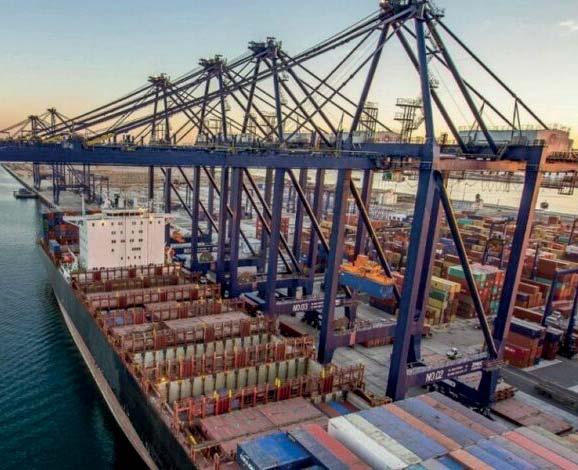
Outwardly the most visible sign of structural change in the container terminal operating sector is the considerable enlargement of the presence of shipping lines. But actually the scale of change goes far beyond this, with significant implications for those parties offering concessions or investment opportunities in general. Essentially, for these latter parties – seeking serious investors – it is important to understand that the international terminal operating sector is today made up of different categories of terminal operator and to seek out the category most appropriate to their respective needs.
Table 1 presents Port Strategy’s current view of the container terminal operating industry, unveiling an inherently more complex picture than might be anticipated even by quite experienced port authorities or other government agencies. It shows that when it comes to operator selection there is a lot to think about with quite marked differences between different categories of operator. Inevitably, there is a degree of subjectivity in assembling such a categorisation and defining the associated characteristics but this has been done tapping into the extensive knowledge of Port Strategy’s in-house team and the input of diverse industry professionals. The analysis also goes one step further by identifying the leading players in specific categories.
‘‘
The traditional method of appointing a terminal operator –as recommended by the World Bank, IFC and other leading agencies – is via a competitive tender with this usually consisting of two key elements, a technical submission and a financial bid. It is a tried and tested process, with a competitive base, that will mechanically deliver the best terminal operating partner. Points are awarded for both the technical submission and financial offering – the party with the largest number of points wins and is awarded preferred bidder status.
QUESTIONABLE APPROACHES
Approaches to securing a terminal opportunity that have recently been much more prevalent, such as country to country deals – the mechanism for example that is said to have delivered the new Patenga Container Terminal (PCT) opportunity in Bangladesh to Red Sea Gateway Terminal –are essentially designed to deliver exclusivity and as such do not possess the inherent advantages of the more competitive open tender approach. The same can be said of when political pressure is brought to bear on behalf of a given party or if a multi-bidder process is run but this is open to undue internal influence – basically corruption – to place the opportunity in the hands of a specific bidder. Angola, for
example, has run tender processes open to diverse bidders where the winner (in terms of points over a technical and financial bid) has not actually been designated the winner but another party has with a lower score.
In all instances, it is important to ensure bid integrity. Not to do so, is to work against the host country’s economic objectives and in all probability to add to costs for importers and exporters. Or to put it more crudely, for the agency issuing the bid to ‘shoot itself in the foot.’
Just as there are tried and tested bid processes there are tried and tested mechanisms, some involving arms-length bodies, to ensure clean bid processes.
SHIPPING LINE TWIST
Readers will recognise that shipping lines have long been involved in the terminal sector with the last three decades seeing the formation of shipping line linked terminal groupings that have not only been established to meet the needs of the associated line but also to service third party business. The full pros and cons of such entities are detailed in Table 1, but it is worth highlighting here a ‘new twist’ to shipping line involvement in the terminal sector. This follows on from the dive by certain lines into logistics on a broad scale and is when the ownership of a terminal by a shipping line affiliated operator is instrumental in the sister line exerting strong control over a supply chain as a whole. This is a step that can remove healthy competition and impair profitability.
Bottom line, today’s international container terminal operating sector has a complex structure and it is fundamentally important for any government agency offering a concession to understand the different categories of operator and their respective merits and demerits to secure the best fit partner.
8 Operator selection under a country-tocountry deal lacks the inherent advantages of a more competitive open tender process
CONTAINER TERMINAL OPERATION 20 | SEPTEMBER 2023 For the latest news and analysis go to www.portstrategy.com
It is to necessary to understand the different categories of operator and their respective merits and demerits to secure the best fit partner
CONTAINER TERMINAL OPERATION
8
GOVERNMENT OWNED/CONTROLLED/COUNTRY-TO-COUNTRY DEALS
Companies: AD Ports, China Merchants Port Holding Company Ltd, COSCO Shipping Ports, DP World, Red Sea Gateway, Qterminals

Profile:The recent distinguishing characteristic of these companies is that they have all played the government-to-government card to gain access to market opportunities. Frequently, this approach has a backcloth to it which offers a wider level of engagement designed to be attractive to the country presenting the opportunity and with this invariably possessing a strong element of financial inducement that extends way beyond the port sector.
The downside of this approach is that it can eliminate healthy competition focused on securing the best investor/operator for the opportunity at hand and similarly set against a wide offering the importance of the core opportunity can be undermined. It can also have severe consequences in terms of political fall out and social unrest as DP World is now finding in Tanzania where it is pursuing a large scale port management project.
8 GOVERNMENT OWNED
Companies: PSA International (Port of Singapore Authority affiliate), Shanghai International Port Group
Profile: These two companies reflect something of a conservative nature in accordance with their public ownership – they are not at the far end of the risk-taking spectrum. PSA International is a first-generation entrant to the international terminal operating sector and has a strong global presence often reflecting its strong skill set in the area of transshipment activity. SIPG has a much tighter relationship with government with its terminal operations largely in China.
8 PRIVATE/STRONG POLITICAL BACKING
Companies: Adani Ports & Special Economic Zones (AP&SEZ), Yilport, Hutchison and CMA Terminals/Terminal Link
Profile: It is the past activities of these four groupings that identify them as having strong political backing from their respective home countries – Adani (India), Yilport (Turkey) and CMA Terminals and Terminal Link (France), although it should be acknowledged Terminal Link is 49 per cent owned by China Merchants Port Holding Company Limited. This political backing has been useful consolidating their presence at home and advancing their expansion overseas. It is not infallible, however, as witnessed by the recent situation with Adani which has seen billions wiped from the market cap of the conglomerate’s listed companies. This followed a report issued by New York-based Hindenburg Research which accused Adani of using an offshore shell network to manipulate earnings and “avoid a material writedown and negative impact to net income.” Now, as PS goes to press, Adani awaits the imminent findings of a probe by The Securities and Exchange Board of India plus it has just seen Deloitte, the longtime auditor of its ports division, resign voicing concerns it could not comprehensively scrutinise transactions between companies in the group and the ports unit. India’s Prime Minister, Narendra Modi, is recognised as a long-time supporter of Adani but as the group’s current troubles indicate such affiliations can prove problematic.
8 SHIPPING LINE AFFILIATED OPERATORS
Companies: Africa Global Logistics (MSC affi liate/ex Bollore), APM Terminals, COSCO Shipping Ports, Hapag Lloyd, Terminal Investments Limited, CMA Terminals/Terminal Link Profile: The above are the major shipping line affiliated terminal operators that offer their services not just in conjunction with the activities of their sister shipping line and its consortia partners, if applicable, but also to other lines in a general context. As noted at the outset of this article, shipping lines during the lucrative years of the pandemic have greatly increased their presence in the terminal sector with a number of notable deals for terminal portfolios, and particularly:
5 MSC’s purchase of the Bollore businesses in Africa comprising 22 port and rail concessions, 66 dry ports, two river terminals and over 250 logistics/maritime agencies. These businesses were rebranded under the name Africa Global Logistics, and
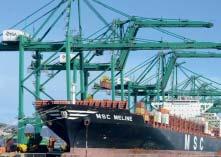
5 Hapag Lloyd securing a 40 per cent stake in J M Baxi’s Indian port and logistics operations which comprise key container terminals, a multi-purpose terminal, inland container depots, CFS and other logistics activities. Further this acquisition followed on the heels of the company buying SAAM Ports and SAAM Logistics from Chilean multinational port services company SAAM with the terminal portfolio comprising 10 port terminals located in six countries in the Americas. Such shipping line affiliated operators have a number of core characteristics including:
5 With new concession opportunities, holding out the carrot of bringing volume to the facility via their partner shipping line.
5 The downside of this is that liner operated terminals will typically operate them as cost and not profit centres when serving their sister line and partners.
5 In a service context, while publicly they will deny it, the priority is to meet the needs of the affiliated shipping line(s).
5 As a rule, competing lines do not like to use each others’ terminals denying some business opportunities.
5 Increasingly, terminal assets are seen by lines as an integral part of their efforts to control a whole or large part of a supply chain with the knock-on effect of reducing competition.
8 PRIVATE & INDEPENDENT OPERATORS
Companies: International Container Terminal Services Limited (ICTSI), Eurogate Hutchison (outside China) & SSA Marine
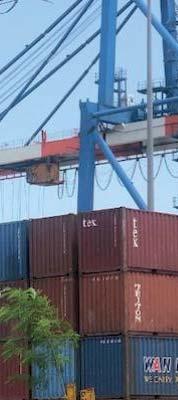

Profile: All the above companies have long been established in the terminal operating sector and largely offer services on a neutral basis (without preference) to all shipping line customers. This neutrality or independence contributes to their strength, facilitating highly productive common user terminal operations.
The Eurogate network covers 12 terminals in Europe and it does operate in partnership with shipping lines at the Eurogate Tanger SA facility where it has a 20 per cent equity stake.
Hutchison, a pioneer in the sector, has a big global presence but has been quieter in recent years.
ICTSI is the most independent of the three companies with a global portfolio of over 30 terminal facilities including the newly added Durban Pier 2 Container Terminal where it is in partnership with Transnet.
SSA Marine is active on a global basis but has a particularly a large footprint of terminals in the Americas.

TABLE 1: INTERNATIONAL TERMINAL OPERATOR CATEGORIES & CORE CHARACTERISTICS For the latest news and analysis go to www.portstrategy.com SEPTEMBER 2023 | 21

SUPPLY CHAIN STRATEGY 22 | SEPTEMBER 2023For the latest news and analysis go to www.portstrategy.com Click here to read article on Port Strategy online

SUPPLY CHAIN STRATEGY For the latest news and analysis go to www.portstrategy.com SEPTEMBER 2023 | 23 Click here to read article on Port Strategy online
CAMBODIA CLIMBS THE LADDER
With the manufacturing shift out of China continuing, AJ Keyes assesses how Cambodia is developing as an option, especially in the garments and apparel business, and what it means for the country’s ports
Outsourcing to East Asia is continuing as the cost competitiveness of China continues to be eroded and political pressure intensify. Cambodia is targeting infrastructure investment to become a more viable alternative, especially in the garments and apparel business. This is following a model now being achieved in Vietnam, where the reliance on transshipment is being replaced by direct deepsea calls – but does Cambodia have the critical mass of cargo demand and port facilities to be successful?
KEY FACTOR IN THE MANUFACTURING EQUATION
Low labour costs have been a key factor that helped establish China as a major manufacturing powerhouse, supported by low land costs, favourable tax legislation, good (port) infrastructure and an available labour workforce.
However, as China has developed its dominant manufacturing role, its cost competitiveness has been eroded. For example, according to specialist information provider, Data&, the average cost of wages per unit of output has risen by more than 280 per cent during the past 20 years in the country. On this basis, it is no surprise that many companies are looking to lower production costs without compromising on the quality of the manufactured products by seeking East Asian alternatives to China). So, where in the manufacturing development process is Cambodia, especially in relation to Vietnam, which offers an operating model to be replicated?
Table 1 represents a summary of the garment/textile industry between Vietnam and Cambodia for 2021/2022 and it can be seen that while the industry is sizeable in Cambodia, the country still lags behind Vietnam in terms of market development and manufacturing production.
THE GREAT SUPPLY CHAIN MIGRATION
The Ministry of Economy and Finance in Cambodia is targeting new investment to build the infrastructure necessary to drive further growth and expand its industrial base. The government quotes research provided by Torontobased financial services company TMX, entitled “The great supply chain migration – breaking down the cost of doing business in Asia,” which named Cambodia as the country with the lowest “average total operating cost” for manufacturing enterprises. Here, Cambodia was cheaper than other lowcost competitors from the Association of Southeast Asian Nations: Vietnam, Myanmar, and the Philippines.
However, the TMX report, which was first released at the end of 2021 but clearly remains valid, cautions that Cambodia currently resides at the bottom rung of what it defines as the “three stages of the manufacturing value chain,” or in more simple terms, it manufactures products on only basic assembly lines. The situation in mid-2023 has changed radically in favour of the potential role of Cambodia as the search for China alternatives has intensified.
The developing nation still needs to show growth in “developing supply chains” and “early automation” to be an attractive option for complex products. Its strength is in the textile and garment industries.
There are projects underway to ensure ports help support the burgeoning supply-chains in Cambodia. A five-year
National Strategic Development Plan (NSDP) 2019-2023 outlines the government’s vision on key policy areas including bottlenecks in productivity and competitiveness and taking advantage of its strategic geographic location in Southeast Asia. At the same time, it is preparing a Masterplan for Multimodal Transport and Logistics to accelerate integration and increase the investment budget across all areas of transport, including ports. In conjunction with NSDP, the Minister of Public Work and Transport (MPWT) has also developed a Transport and Logistics Master Plan 2022–2030, supported by Chinese development partners. It cites 330 different infrastructure projects totalling US$50bn, including:
5 Phase I of a new container terminal at the Sihanoukville Port, to be completed by 2025.
5 A Phnom Penh Logistics Centre.
5 Improvements in waterway transport, including a link from the capital to the Kep Coastal Port via the Tonle Bassac River.
“CLOSE TO CAPACITY”
The busiest container ports are Phnom Penh and Sihanoukville, which both serve as national gateways, albeit served by feeder vessels primarily from Singapore.

As Figure 1 confirms, there has been continued growth at both facilities, with Phnom Penh generating increases of 17.3 per cent per annum as its throughput rose from 95,333TEU in 2012 to 417,696TEU by the end of 2022. By comparison, growth at Sihanoukville was lower at 9.3 per cent per annum, but volumes are much higher rising from 355,380TEU in 2012 to an estimated 792,728 for 2022.
Due to this growth, the government in Cambodia states that both ports are operating “close to capacity.” There are plans to rectify this position.
At a groundbreaking ceremony at the start of May 2023, Samdech Techo Hun Sen, Prime Minister of Cambodia, announced that a new container terminal at Sihanoukville Autonomous Port will transform this feeder port into a hub port by 2029, in response to economic growth and rising international trade demand involving Cambodia: “The expansion project will allow large container ships to dock at the port and significantly reduce ocean freight costs for
8 Cambodia’s government has plans to increase port infrastructure to target bigger ships as part of a strategy to move from feeder port to hub port….
CAMBODIA: BUILDING LOGISTICS CAPACITY 24 | SEPTEMBER 2023 For the latest news and analysis go to www.portstrategy.com
Cambodia. It will help attract investors and accelerate our economic development.”
At the same event, Sun Chanthol, Minister of Public Works and Transport, confirmed that the new terminal will involve three phases of development:
5 Phase I - construction of an onshore general cargo terminal and a 350m container berth, with water depth of 14.5m able to handle ships of up to 4000 TEU in size. The cost is US$275 million and due for completion by 2026.
5 Phase II – construction to start in 2025 and finish in 2028.
5 Phase III – work will begin in 2016 and end by 2029.
5 Phase II and Phase III expected to cost US$698 million.
The existing Sihanoukville Autonomous Port facilities have a confirmed capacity of 700,000TEU per annum, but the new project will deliver container capabilities to handle 1.4 million TEU per annum in 2026, subsequently rising to 2.58 million TEU per annum when finished in 2029.
COMPLEMENTING SIHANOUKVILLE
Expanding Sihanoukville is not the only port project underway. Construction has commenced on a new multipurpose port in the Kampot province of Cambodia, with funding supplied from the private sector.
Phase I of the project is due to be operational during 2025 and will offer a capacity of 300,000TEU per annum, with a second phase doubling the space to 600,000TEU per annum by 2030. A water depth of 15m is envisaged, allowing larger ships than the current small feeders only able to call in Cambodia.
In addition to being able to receive larger ships, there is a need to combine water, road and rail connectivity with the country’s capital city, Phnom Penh, plus other provinces via the Phnom Penh-Sihanoukville Expressway.
The importance here is that it will better link the port with key locations where manufacturing activities are being further developed, which is part of the government’s current policy of industrial development in the country by 2025. As
CAMBODIA: BUILDING LOGISTICS CAPACITY
part of this master plan initiative, Sihanoukville will become a special economic zone. This push for the further development of Cambodia’s ports and wider infrastructure follows the signing of free trade agreements with China and South Korea, which the government is hoping will lead to a significant boost in both internal and external trade.
MORE TO COME – FOR BIGGER SHIPS
Based on the government of Cambodia’s aims, a further port is anticipated that can offer a water depth of 17.5m in a bid to see direct calls from ships to/from the US and Europe.
There is clearly a need for success here, as Chanthol openly admitted: “Now, due to the shallow water, Cambodia has to transport goods to Singapore or to Hong Kong to transfer goods to the big ship, which is not cost-effective.”
Based on current shipping line calls to Cambodia, less than 20 per cent of container ships working in the Asia Pacific region can access ports in the country, so an improvement is essential.
The move to larger ships is needed, based on current ship sizes calling to ports in country. For example, according to Alphaliner ships calling to Sihanoukville during week commencing August 7, 2023, ranged between 1,114 TEU and 2,038 TEU, with the previous / next port of call in the rotation consisting of Singapore and Hong Kong. This endorses Cambodia’s role remains part of regional feeder services.
The ability to target bigger ships will lower the reliance on transshipment activities via hub ports like Singapore and target potential direct calls – a similar strategy is underway at ports in Vietnam – and, of course, a natural progression in the region. Growth in manufacturing will be crucial in providing cargo demand, but ports need to ensure the infrastructure is available too.
For the latest news and analysis go to www.portstrategy.com SEPTEMBER 2023 | 25 IndicatorsVietnamCambodia Garment/textile workers2.5 million (75% women) 671,000 (82% women) Number of garment/textile factories10,000718 Garment/textile exports – valueUS$44bnUS$11bn Garment/textile exports – % of total exports12%64% Largest export market – share of valueUS (41.3%)US (39.9%)
8 Table 1: Comparison of Garment/Textile Industry in Vietnam and Cambodia, 2021/2022
Copyright© 2012-2023 Dr. Sheng Lu, Associate Professor, Department of Fashion & Apparel Studies, University of Delaware/Asia Garment Hub (2023)
‘‘
...due to the shallow water, Cambodia has to transport goods to Singapore or to Hong Kong...to transfer goods to the big ship, which is not cost-effective…
8 Figure 1: Development of Total Container Volumes at Ports of Phnom Penh and Sihanoukville, 2012 to 2022 in TEU
MORE PUBLIC SECTOR DOLLARS
The rapid escalation in container ship size presents challenges, especially in an era of strong inflation. More public sector support can facilitate going beyond doing the minimum and being ready to capitalise on the new opportunities round the corner. Mike Mundy presents the facts
Pressure is building on the container terminal operating sector caught between the two realities of having to invest in order to meet the requirements of rapidly escalating container vessel size and the fast increasing cost of dredging works and new terminal development.
In 2013 Maersk Line unveiled its E class vessel design which featured a capacity of 13,000TEU. Ten years on, in 2023, we are seeing Megamax vessels with capacities in excess of 24,000TEU enter service, nearly double the capacity of the E class vessels. This rapid scaling up contrasts with the much slower rate of development that preceded it – in 1996 the maximum container vessel size was 6600TEU, taking 17 years to rise to the 13,000TEU level in 2013.
The last 10 years has taken some considerable effort on the part of terminal operators to keep pace with the new, larger ship sizes – not just at the top end of the vessel capacity range but also as higher capacity vessels are cascaded down into secondary trade lanes.
In the near term, there is no prospect of matters getting any easier – there is a new containership building spree underway which promises to be equally, if not more, challenging. A record 1.2 million TEU of new tonnage was delivered in the first seven months of this year and BIMCO
forecasts a total of 2.4, 2.9 and 1.9 million TEU of new vessel capacity to be delivered in 2023, 2024 and 2025 respectively. In overall terms, the fleet is expected to grow by approximately 4.5 million TEU, an 18 per cent capacity uplift, taking place between early 2023 and early 2025.
Promising to have a particularly significant impact is the number of larger container vessels on order. As of August this year, the current fleet of vessels larger than 14,000TEU capacity stood at 391 units totalling 6.98 million TEU, with an order book for another 254 vessels with a combined capacity of 4.46 million TEU. Out of this figure there are 59 vessels on order with a capacity of 22,000TEU or above.
There is no doubt there will be another significant round of vessels cascading down from the main arterial trades to secondary and even other smaller trade lanes.
The lesson from this is that the pace of change is rapid and forward port and terminal planning must take account of this, be proactive, and expect the unexpected.
Over the previous decade, there have been quite a number of ports that have not gone far enough in their development works and have lost significant ground as a result. It provides serious food for thought when, for instance, contracting dredging services, which tend to have a high mobilisation
8 Public sector finance, a larger role foreseen in today’s challenging business climate

FINANCING PORT DEVELOPMENT 26 | SEPTEMBER 2023 For the latest news and analysis go to www.portstrategy.com
cost and are now subject to inflationary pressures. The advantage of hindsight tells us it can prove a better option to step up development works, to go to the next level, a larger scale, in order to not lag behind rapid container system development and as a path to cost containment overall.
THE COST PICTURE
The Port Authority of Valencia (PAV), the management body for one of Spain’s leading ports, reports that the road and rail remodelling project that it commenced in 2021 and which is still underway has so far suffered from a price uplift of 11 per cent, equivalent to a €4.7 million increase – with this governed by pricing formulas and price indices laid out in the contracted works. For its new, recently completed, North Container Terminal, possessing a quay length of almost 2000 metres and a yard of 1.9 million square metres, the PAV states that the investment originally planned has risen by more than 20 per cent, due to price increases and some changes of project scope.
Similarly, Taiwan International Ports Corporation (TIPC) notes: “Influenced by the rising cost of construction materials, inflation, the COVID-19 epidemic and the war in Ukraine, the construction price index in Taiwan has reached record highs, with the average annual rate of increase of the construction price index (total index) being nearly seven per cent.
TIPC, together with the concession holder Evergreen Marine Corp, has recently launched the seventh Taiwanese container terminal in the port of Kaohsiung. Taiwan’s first completely automated container terminal, with a draft of 18m and a total length of 2415m, features five deep-water container berths and can accommodate four 24,000 TEU super-large containerships at the same time.
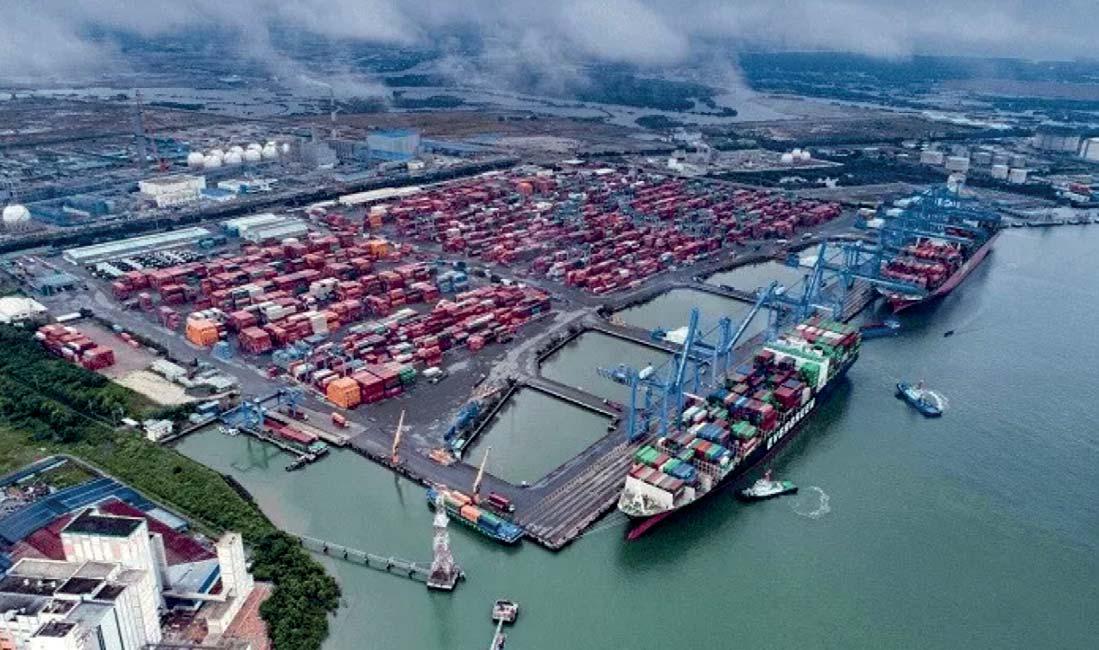
Brad Saunders, British Maritime Technologies, Senior Principal Engineer, Program & Technical Lead APAC – Coastal & Maritime Engineering, adds with specific reference to dredging projects:
“Inflation in economic terms or increases in cost due to a range of factors such as the availability of contractors, major plant, and the cost of mobilisation from other areas of high demand all impact dredging costs. The impact on a project business case and then design development is uncertainty in cost estimates that are very difficult to gauge and can often ‘blow out‘ predetermined budgets, which were developed in more normal periods of activity with higher levels of certainty for access to resources and without the added challenge of inflationary pressure on current value of funding and indeed the construction cost indexing.
“Project owners and investors,” Saunders underlines, “may need to reassess the feasibility and financial viability of certain projects in the light of these changing circumstances.”
Add to this scenario the reality that containership operators are sailing into hard times, the hallmark of which is much reduced freight rates, then the downstream impact of this on port operators is container lines attempting to freeze or cut terminal tariffs. So, there is little prospect of an uplift in revenues to cancel out cost increases.
RETHINK ON SUPPORT
The International Monetary Fund (IMF) states: “Global headline inflation is expected to fall from 8.7 percent in 2022 to 6.8 percent in 2023 and 5.2 percent in 2024. Underlying
8
is planning to receive larger vessels – as this rendering illustrates – and has substantial public sector financing allocated to support its development programme
FINANCING PORT DEVELOPMENT For the latest news and analysis go to www.portstrategy.com SEPTEMBER 2023 | 27
Cai Mep Thi Vai
‘‘
A cocktail of rapidly increasing container vessel size and inflationary times lends support to the idea of more public sector support for container port development
FINANCING PORT DEVELOPMENT
ProjectInfrastructure & Dredging Works Funded by the Public Sector
Cai Mep, Vietnam
New Second Container Terminal
Damietta Port, Saudi Arabia
Taiwan International Port Corp (TIPC), Taiwan
Sihanoukville Deep-Water Port, Cambodia
Port of Tauranga, New Zealand
By 2025, the Cai Mep – Thi Vai channel from buoy number 0 to the Cai Mep Container Terminal will be implemented under the phased programme for public maritime infrastructure development
The infrastructure works (dredging and quay wall construction) are being implemented by the Damietta Port Authority
Infrastructure and dredging are part of the public infrastructure and are funded by Central Government, states TIPC. Terminal development can be financed either by TIPC’s operational fund, or by investment by public or private entities under contracted terms.
Cambodia has sourced JICA finance to the tune of US$300 million to expand and modernise the port’s infrastructure. The first phase is scheduled to be completed by 2026 and will cost US$275 million. This will cover the construction of a 350-metrelong and 14.5-metre-deep container terminal.
The Port of Tauranga reports it plans to construct a new 385m berth at its container terminal precisely with the objective in mind of accommodating larger size container vessels. Allied to this and other berth extensions is the upgrade of the port’s shipping channel involving dredging up to 1.8 million cubic metres.
The port company is 54 per cent owned by the Bay of Plenty Regional Council but is publicly listed. The entity Quayside is the investment arm of the Bay of Plenty Regional Council and is expected to be directly involved in the port’s new development plans.
Lien Chieu Port, De Nang, Vietnam Lien Chieu Port, a component of Da Nang national port, is intended to serve as an international gateway for Vietnam’s central region and link with the economic corridor connecting Thailand, Myanmar and Laos. The project has two main phases: the general components will be developed through public investment, including breakwaters, dredging and the provision of connecting roads. The second phase is to expand logistics capacity.
Tuas Port, Singapore
The first two berths at Singapore’s Tuas Port started operations in December 2021, three more in December 2022 with 21 deep water berths able to handle 20 million TEU by 2027. The Maritime and Port Authority of Singapore (MPA) commenced reclamation works for Tuas Port Phase 1 in February 2015 and completed it in November 2021. Tuas Port Phase 2’s reclamation works commenced in March 2018.
MPA had completed all caisson fabrications in April 2022 - 227 10-storey tall caissons had been used to form 9.1km of seawall for Phase 2.
The Maritime Port Authority of Singapore is a government agency as is port operator PSA, the entity responsible for container handling.
(core) inflation is projected to decline more gradually, and forecasts for inflation in 2024 have been revised upward. It further notes global growth remains weak by historical standards and that, “Inflation could remain high and even rise if further shocks occur, including those from an intensification of the war in Ukraine and extreme weather-related events, triggering more restrictive monetary policy.”
Against this difficult cost and earnings picture, however, containerports have to continue to evolve and accommodate the latest requirements of their shipping line clients.
This, industry experts suggest, may mean a rethink on sources of finance and allied to this ‘how to spread the load.’ The finance sector has been reasonably creative in recent years, adding to basic debt and non-recourse financing structures with different forms of equity finance, project bonds and seeing the entrance of pension funds and more recently state investment agencies, the highest level of which is the new phenomenon of government-togovernment deals, although it remains to be seen if these are a welcome development – see p20.
What may be a more realistic approach from a public sector financing point of view is for port authorities and other government agencies to step into projects and take responsibility for core project elements such as the associated dredging or berth line construction works. It is
indeed notable that full Build-Operate-Transfer (BOT) projects, where terminal operators undertake the whole development themselves, are becoming much rarer as costs escalate and public sector authorities recognise that the participation of public funding is an essential prerequisite to maintaining timely and fit for purpose project development. Indicative of this are a number of recent or current container sector projects highlighted in Table 1.
FURTHER, FASTER
The helping hand of financial support from the public sector for dredging or terminal development projects can serve to place port facilities in a greater state of readiness to meet the challenges ahead – to keep pace with rapid container shipping system development, to take two steps instead of one. To do this is effectively to be ready for new business opportunities, to grow positively and not to lag behind.
‘Expect the unexpected’ was highlighted above and almost on cue, at the time of writing, Alphaliner reports that container lines could consider building post-Neo-Panamax (PNPX) container ships to fill the gap between 16,000 TEU and 24,000 TEU vessels. PNPX ships, with optimised hull designs and advanced engines, could offer competitive slot costs vis-à-vis the ships in the 18,000-19,000 TEU range. Alphaliner contends.
8 Table 1: Sample Current and Recent Container Terminal & Waterway Projects That Involve Public Sector Funding
28 | SEPTEMBER 2023 For the latest news and analysis go to www.portstrategy.com

UKRAINE: TERMINAL INVESTMENT For the latest news and analysis go to www.portstrategy.com SEPTEMBER 2023 | 29 Click here to read article on Port Strategy online
ETS: TRADE DIVERSION RISK?
In April 2023 the European Parliament approved legislation to include maritime shipping emissions under the EU Emission Trading System (ETS). In this article, Royal HaskoningDHV explores the potential risk of shifting trade routes to ports outside Europe to avoid ETS related costs
ETS IN A NUTSHELL
Under the extended ETS legislation1, shipping companies need to surrender allowances for CO2 emitted by commercial cargo and passenger ships of 5000 gross tonnage (GT) and above. A gradual phase-in will apply between 2024-2026. By 2026 the European Commission will review whether ships between 400 and 5000 GT will also be included in the EU ETS. In addition to CO2 emissions, the legislative bodies agreed to include methane and N2O in the EU ETS from 2026 onwards.
As further details are still awaited, this Business Briefing focusses on CO2 emissions. Box 1 explains how the ETS allowance system will work in practice.
The proposed ETS obligation differs between CO2 emitted on intra-EU voyages (100 per cent allowances) and extra-EU voyages (50 per cent allowances). An intra-EU voyage is defined as a voyage where both the origin and destination of the voyage are within the EU. If either the origin or the destination is outside the EU, the voyage is defined as extra-EU. The distinction is
1As the legislative text has not been published yet in the EU Official Journal, this Business Briefing is based on the publicly available information about the agreement.
2To avoid evasive behaviour, the new legislation includes a specific clause for container ships calling at non-EU transshipment ports (which have at least 65 per cent transshipment activity) which are located less than 300 nautical miles from an EU port. Although the leg from origin to the transshipment port technically can be considered a voyage between a non-EU port and another non-EU port, still 50% of the ETS allowances are required for this voyage.
relevant as it can create a financial incentive for shipping companies to reduce intra-EU voyages 2
POTENTIAL IMPACT
Generally speaking, the lower the geographical distance towards an alternative non-EU transshipment port, the larger the risk of shifting trade routes. The risk that container shipping
Under the ETS regulation, shipping companies must, on an annual basis, surrender a quantity of ETS allowances to their administering authority. The quantity of allowances is equivalent to their annual greenhouse gas emissions; each allowance represents one tonne of greenhouse gas emissions. The administering authority is determined based on where the shipping company is registered. Each EU Member State has its own authority. If the shipping company is not registered in an EU Member State, it is attributed to the Member State where it had the highest number of port calls in the two previous monitoring years. As of 2024, the Commission will publish and regularly update a list of shipping companies and their respective administering authority. The EU ETS system sets an absolute limit or ‘cap’ on the total amount of certain greenhouse gases that can be emitted each year by the entities covered by the system. This cap is reduced over time so that total emissions fall.

EU EMISSION TRADING SYSTEM ASSESSED 30 | SEPTEMBER 2023For the latest news and analysis go to www.portstrategy.com
8 Box 1. ETS Allowances in Practice
8 Figure 1. Large Container Ports (>2mln TEU) - red is EU, blue is non-EU
This Business Briefing is authored by Michiel Verduijn, Maritime Economist, Royal HaskoningDHV
companies will try to avoid the ETS obligation will depend on different variables including the ETS price, (alternative) fuel prices and the existence of alternative shipping routes using ports outside the EU. Figure 1 provides an overview of large EU container ports and geographically nearby non-EU ports. RHDHV notes that the risk of shifting trade routes towards ports outside Europe is particularly relevant for transshipment activities; import/export cargo is less likely to be rerouted.
COST BENEFIT ANALYSIS
RoyalHaskoningDHV has setup a financial cost-benefit analysis to assess the financial impact on shipping companies and the risk of shifting trade routes. The building blocks of the financial cost-benefit analysis are fuel costs, charter costs and the expected costs as a result of the obligation to surrender ETS allowances, referred to as “ETS costs”. On the one hand, a shift of a trade route towards a port outside Europe is expected to lead to lower or zero ETS allowance costs. On the other hand, a shift is expected to lead to higher charter costs and fuel costs. RoyalHaskoningDHV has developed its own regression models to estimate charter and fuel costs for different vessel types based on historical data of, among others, Seaweb and Clarksons. The financial cost-benefit analysis is set up for two cases:

1. Eastbound (Asia-Europe): 20k TEU ship from Suez to Algeciras (2002 nm)
2. Westbound (Transatlantic):10k TEU ship from New York to Rotterdam (3383 nm)
For the sake of the initial investment, this study uses the following assumptions:
5 The analysis is based on container transshipment;
5 The analysis is based on ETS allowance costs after the gradual phase-in period;
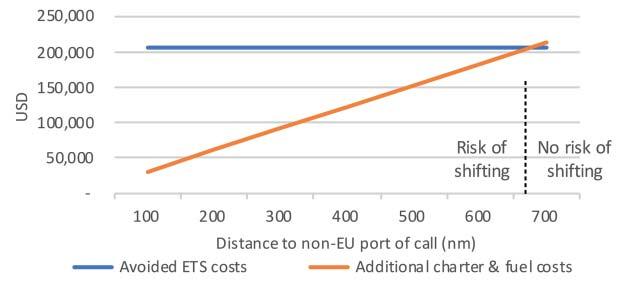
5 The analysis assumes similar port costs in EU port and nonEU port;
5 The analysis takes into account a specific leg of a larger container routing. The effects on the total routing (e.g. Asia –Europe) are not part of this analysis.
RISK OF EVASION
The risk that container shipping companies will try to evade the ETS obligation will depend on different variables including the ETS price, (alternative) fuel prices and the existence of alternative shipping routes outside the EU. Generally speaking, the lower the geographical distance towards an alternative non-EU port of call, the larger the risk of shifting trade routes. RHDHV has estimated the ‘tipping point’ where the avoided ETS allowance costs outweigh the increased charter and fuel costs.
On the Eastbound case (FIgure 2), the tipping point is estimated at a geographical distance of around 400 nautical miles from the original EU port of call. Beyond that point, the additional fuel and charter costs are likely to outweigh the avoided ETS costs.
On the Westbound case (Figure 3), the tipping point is around 650 nautical miles. The difference between the Eastbound and Westbound case is due to multiple factors including the distance of the original trade route and ship size
assumptions. As expected, the risk of ETS evasion will be higher if the original trade route (e.g. New York to Rotterdam) is longer and the geographical distance towards an alternative non-EU port is lower. A sensitivity analysis (Figure 4) shows that the ‘tipping point’ can decline to around 300 nm (Eastbound) and 500 nm (Westbound) in case of higher fuel prices.
STAKEHOLDER IMPACT
At this stage it is hard to predict to what extent the additional ETS costs will be transferred to customers (i.e. higher cost per TEU) and to what extent shipping companies will intensify their efforts towards clean fuels as a result of the ETS regulation. RHDHV notes that reliable access to alternative fuels will help making the shift, which underpins the importance of initiatives like the Green Corridor between Singapore and Rotterdam. An important takeaway from this analysis is that European regulators should closely monitor potential evasive behaviour to make sure the desired decarbonisation efforts of the maritime sector are to be achieved.

8 Top - Figure 2.
Cost Comparison
Shifted Route: Eastbound
Middle - Figure 3.
Cost Comparison
Shifted Route: Westbound
Above - Figure 4.
Sensitivity Analysis:
Break Even Distance at Different Fuel Prices
For the latest news and analysis go to www.portstrategy.com SEPTEMBER 2023 | 31
EU EMISSION TRADING SYSTEM ASSESSED
‘‘
… the lower the geographical distance towards an alternative non-EU transshipment port, the larger the risk of shifting trade route
CLEAN FUELS: METHANOL-TO-HYDROGEN

32 | SEPTEMBER 2023For the latest news and analysis go to www.portstrategy.com
here to read article on Port Strategy online
Click

FUELS: METHANOL-TO-HYDROGEN For the latest news and analysis go to www.portstrategy.com SEPTEMBER 2023 | 33 Click here to read article on Port Strategy online
CLEAN
TACKLING LITHIUM-ION FIRES
The fire onboard the Fremantle Highway, off the Dutch coast in July, focused minds once again on the risks around the transport, handling and storage of lithium-ion batteries. Felicity Landon reports.
In March this year, the European Maritime Safety Agency (EMSA) noted that lithium-ion batteries had been identified as one of the main cargo types responsible for ‘a large share of cargo fire accidents’. And, as it also noted, there is expected to be an exponential increase in the volumes of lithium-ion batteries being transported.
The Fremantle Highway fire claimed the life of one seafarer and forced at least seven others to jump overboard, to drop 30 metres into the sea below. In escaping, seafarers suffered burns, broken bones and breathing problems. Early indications were that the fire was caused by one of nearly 500 EVs on board.
Inevitably, such a horrendous car carrier fire at sea takes the headlines. But the concerns around lithium-ion batteries and their risks extend way beyond cars – think laptops and other electronics. The risks also extend throughout the supply chain, including ports, terminals, storage areas and warehousing. In the push for decarbonisation, port equipment is also being electrified, with associated risks.

“Certainly the risks associated with lithium-ion batteries are on our radar,” says Richard Steele, CEO, ICHCA. “We are trying to understand the risks associated with transporting them. We also know there are cases of fires on land – for example, instances of fatal fires where people were charging e-scooters in halls or apartments.”
Earlier this year, Dirk Van de Velde, Deputy Chair of the Cargo Incident Notification System Network (CINS) and a Board Member of ICHCA, urged all stakeholders in the production, supply, transport, handling and sale of lithium-ion batteries, whether as individual components or integrated into an electronic device, vehicle or other product, to ‘recognise their responsibilities in maximising safety when in transit’.
CINS has produced guidelines for the safe transport of lithium-ion batteries in containers, and these include container packing, landside storage, stowage on board, incident detection and fire suppression.
LASH FIRE PROJECT
LASH FIRE, a research project aiming to reduce the risk of fires on board ro-ro vessels, is one of a number of international
initiatives considering the issues. As Steele says, there are varying opinions on the risks of EV fires, how controllable they are and how best to tackle them. What is known is that a lithium-ion battery fire can reach 2000 degrees within minutes, and that extremely toxic gases are released.
“If you are attempting to fight or control the fire, you have got the temperature, the flames and the potential for explosion,” says Steele. “This creates a real challenge to fight the fire, even in a managed safe way. The risks are significant.”
In addition, because a battery fire can continue to burn for a long time, and also reignite after it appears to be suppressed, there is a huge risk of fire spreading to other EVs or internal combustion engine (ICE) vehicles nearby. “It is important that we are looking at this in a way to provide safety for crew, shoreside workers and fire/emergency responders,” he says.
“However, it’s important to emphasise that we are not antiEV. This is about acknowledging the reality of cargoes and what’s being manufactured and transported, being smart and joined up, and continuously improving safety. The industry as a whole needs to push forward with a common understanding.”
If a lithium-ion/EV fire breaks out within a port setting, Steele says a risk assessment should be carried out to decide whether it is safe for operators to go into a compound and drive other vehicles away.
“LASH FIRE demonstrations showed a fire being controlled in a car park – using fire blankets, long-range water spray into the vehicle, for example. That’s all doable. In the case of port handling equipment running on batteries, it may be possible to create a safe cordon around it.”
Peregrine Storrs-Fox, Risk Management Director at the TT Club, emphasises that when thermal runaway happens, the result is the release of toxic gases such as carbon monoxide and hydrogen cyanide, along with a very high temperature fire that can spread very fast. There have been reports that EVs do not catch fire any more often than ICE cars – but, as he points out: “When you have a lithium-ion battery fire, it is an awful lot nastier than a normal ICE car fire.
“Ports, terminals and warehouses are involved in this – and we are running to catch up with the risks,” he says. “Lithium-ion
LITHIUM-ION BATTERIES: MANAGING RISK 34 | SEPTEMBER 2023 For the latest news and analysis go to www.portstrategy.com
8 A European Union report cites a lithium-ion battery fire onboard a ship as being potentially more deadly than a sinking ship – it is one of the most dangerous and deadly fires to extinguish
batteries are being moved through ports, stored in port areas and being used in port equipment. There is a lot of focus on understanding how to deal with the variety of risks – and even some of the early adopters (of electric equipment) are already reviewing whether they adopted too early.
“There is an evolving understanding of practicalities such as how best to go about charging, and the distances between charging points and buildings.”
He laments the fact that manufacturers and OEMs are not engaging sufficiently with the transport and logistics industry and emergency responders. Indeed, industry conferences seem to focus on ‘making things faster, bigger, better, more successful from the battery technology perspective’, he says: “But they are not focusing on the risks and they need to engage with others as part of a broader ecosystem.”
Johan Kahlmeter, Claims Director at The Swedish Club, says it is rare that the industry faces dealing with totally new cargoes in significant quantities. “And yet that is the unique challenge that we face with the carriage of electric vehicles onboard ships. These vehicles are tightly loaded, large values are at stake, and a safe haven might be far away. It is essential that all those onboard are given access to the latest safety and loss prevention advice.”
RISKS AND READINESS
The Swedish Club ran two webinars examining the risks of EV fires and how to be prepared.
During one of these, Martin Carlsson, Naval Architect and Fire Safety Project Manager at Stena Teknik, outlined some of the steps taken by Stena Line in response to the increasing number of EVs being shipped.
For example, at booking and check-in stages, Stena confirms it has a registration onboard for the fuel type of each vehicle, as part of the cargo manifest connected to the licence plate. “If there is a situation on board, we will have fast access to information on what fuel type a certain vehicle has. We will update the fire patrol instructions, what signs of malfunction [there are], and the emerging risk situation that we can expect from electric cars.”
Carlsson said that the onboard drencher system performance is equivalent for both EVs and ICE cars and would be sufficient for suppressing fire on these cars equally. “This was proved by testing done by LASH FIRE. The drencher system will then prevent the fire spreading to the next car
and has even seemed to slow down the thermal runaway in the electric car. This is basically due to the fact that the drencher will suppress or even extinguish the fire in the remains of the vehicle and thereby reduce the heat impact and the heating of the battery.”
He stressed the need for crew training in the theories around the lithium-ion battery, the firefighting methodology and the particular hazards to be aware of.
Wallenius Wilhelmsen (WW) also ensures that all alternative fuel vehicles are clearly marked on the loading plan so that crew onboard know exactly there why are stored. Also speaking at The Swedish Club webinar, Filip Svensson, Senior Safety, Quality and Security Manager, said WW does not believe the transport of EVs presents a bigger fire risk, but it does have a restriction that EVs being loaded must have a maximum 30 per cent state of charge. “We firmly believe that the lower state of charge you have, the longer time it will take before a battery goes into thermal runaway.”
a hydrogen tank
Also, WW is not allowing the transport of second-hand EVs as the risk is considered much higher.
Richard Steele says: “There is a lower risk with brand new, well-manufactured vehicles with good quality batteries in them; but one of the issues with lithium-ion batteries is that if they get damaged, it gives an increased chance of fire. When moving to second-hand vehicles, you don’t know what their history might be.”
In parallel, the adoption of new fuels in the drive for decarbonisation adds another layer of risk. As Peregrine Storrs-Fox says, ports need to consider terminal infrastructure, bunkering facilities and charging points. Ports must carry out very thorough risk assessments to manage a variety of new risks and also the potential interface, he says. Put bluntly –don’t have your EV charging station next to a hydrogen tank.
There is much thought and effort going into the issues around lithium-ion batteries, he says, but there are too many silos. “The maritime industry needs to work with the OEMs, manufacturers and responders to assess the risks and how to address them.”
8 Second-hand electric vehicles employing Lithium-ion batteries, often carried in containers, are seen as presenting a higher fire risk
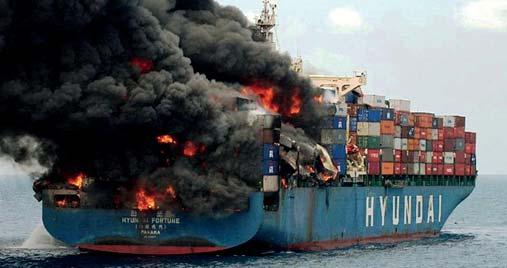
LITHIUM-ION BATTERIES: MANAGING RISK For the latest news and analysis go to www.portstrategy.com SEPTEMBER 2023 | 35
‘‘
Put bluntly – don’t have your EV charging station next to
ELECTRIC DOMINATION
8 The world’s first hydrogen dual fuel straddle carrier has been launched at the Port of Antwerp

SECTOR ANALYSIS: NEW PRODUCT LAUNCHES
Increasing numbers of terminals are opting to electrify their cargo operations as they face growing pressure to reduce their CO2 emissions. The target of net zero emissions by 2050, meeting Environmental, Social and Governance (ESG) requirements and regional regulations such as the 2021 EU Green Deal target of 90 per cent emissions reductions for EU port cities by 2050, means that decarbonising cargo handling systems is a greater priority than ever. While there are challenges to overcome, including infrastructure,
charging and training, port operators can reap benefits including achieving greater energy efficiency, a decrease in maintenance costs and a boost in productivity. As the following table shows, over the last 12 months manufacturers have launched diverse new electric-powered port cargo handling equipment. Some are going further and developing hydrogen-fuelled solutions, leading to more cross-industry collaboration, as companies develop and pilot new solutions.
NEW MODELS, R&D, TRIALS, VALUE-ADDED SYSTEMS
8 FORKLIFT TRUCKS: ADVANCES BUT CHALLENGES REMAIN
Forklift truck electrification is advancing, but there are still challenges to overcome. Rob Maris, Product Strategy Manager, Big Trucks, Hyster Europe explains: “While electrification of higher capacity lift trucks is moving forward, it is not yet the right solution for every application. The initial cost of electric lift trucks along with the infrastructure and charging
Carer Electric Forklift truck solutions: Last year, the company announced that its Carer Industrial Electric Forklift was a new solution available for ports. It has lift capacities of up to 66,000lbs, with a 48-inch load centre. Carer projects that total monthly operating costs for electric forklifts include a reduction of around 40 per cent for repair and maintenance, and a decrease of approximately 88 per cent for energy consumption.
upgrades required can often delay adoption. And for the largest trucks, battery and hydrogen fuel cell technology simply isn’t there yet.” Hyster has launched alternative fuel options to help as businesses move towards electrification. But despite challenges, more electric options are entering the sector, with operators set to gain from reduced operational costs, as figures by Carer highlight below.
Linde Material Handling: In April this year, Linde’s X and E electric forklift truck models were expanded to include those with a load capacity range from 3.5 to 5 tons. The new trucks feature high-performance synchronous motors; in the X models these are additionally equipped with permanent magnets. Linde says that in conjunction with the thermal management system for the power modules installed on the drive axle, the energy performance of the motors is improved by up to five per cent.
NEW ELECTRIC CARGO HANDLING SYSTEMS 36 | SEPTEMBER 2023 For the latest news and analysis go to www.portstrategy.com
Taylor Machine Works: Taylor Machine Works, Inc has launched a battery electric forklift truck. The 36,000-lb. capacity ZH-360L Heavy Lift Truck is powered by permanent magnet synchronous electric motors and NMC batteries. It features an advanced E-Axle that
8 REACHSTACKERS: OPTIONS GROWING
New e-reachstacker products have ramped up. And as detailed below, there is a focus on not only operational sustainability but also sustainable construction. Furthermore, the sector is also looking to the future with hydrogen – Hyster is planning a pilot of a fuel-cell powered Reachstacker at the Port of Valencia as part of the European Horizon 2020 programme and H2Ports project.
Camblift: Founded in 2019, Sweden-headquartered Camblift has launched its first product – a reachstacker that is available with an electric or diesel driveline. It has a reach depth of three to four rows and a lifting capacity of 46, 000kg. Its stacking height is five to six containers high. Carl-Olof Eckerbom, CEO, Camblift says that the reachstacker will enable a “high output in a sustainable and reliable way”.
8 RUBBER TYRED GANTRIES (RTGs): AHEAD OF THE GAME RTGs are ahead of the game when it comes to electrification, with an increasing number of new or retrofit eRTG solutions being offered. As WSP’s April 2023 report, Port Electrification for Container Operations and Vessels, says: “Once electrification is part of the stakeholders’ strategy, implementation can begin with well-established equipment options, such as eRTGs, which are increasingly being adopted worldwide.” The below details new options and a move to hydrogen.
Conductix-Wampfler: Conductix-Wampfler has launched an ECOBatteryPack for RTGs. It consists of a medium-sized Li-Ion battery system that drives all crane operations and a small size diesel genset that charges the battery. For more on this see Port Strategy May 2023 issue.
Konecranes: Konecranes has launched a new RTG that runs off Lithium-ion battery power. The company singles out how the Battery RTG provides the eco-efficiency of all-electric
8 STRADDLE CARRIERS: TESTS AND LAUNCHES
Straddle carriers are a key focus when it comes to lowering emissions as they are one of the major sources of CO2 emissions in container terminals. Francis De Ruytter, Regional Head of Sustainability, Mediterranean and the Americas, PSA Europe, says: “Straddle carriers are crucial in maintaining highly productive operations at our terminals, but at the same time they are responsible for approximately 90 per cent of our direct emissions in Belgium.” PSA Antwerp and partners have launched a hydrogen dual fuel straddle carrier (see below).
CMB.TECH: The world’s first hydrogen dual fuel straddle carrier is being tested at the Port of Antwerp following a joint venture between MSC PSA Europe Terminal, PSA Antwerp and Antwerp Terminal Services (ATS). Antwerp-based CMB. TECH, which is specialised in developing and building hydrogen and ammonia-powered applications, was responsible for integrating the technology and the related expertise to design and build this first prototype, in collaboration with ATS and equipment manufacturers. The dual fuel technology is able to replace 70 per cent of diesel
uses regenerative braking to assist with battery recharge during operation. The forklift truck can operate uninterrupted through an average duty-cycle 8-hour shift, with recharge time taking 1.5 hours. See also Equipment News this issue
Kalmar: Kalmar has launched what it calls the “world’s most sustainable” reachstacker. By constructing the electric reachstacker with 47 per cent SSAB Zero steel, which is made from recycled steel and produced using fossil-free electricity and biogas, Kalmar has been able to significantly reduce the levels of embedded carbon in the product. The company is also introducing a new emission-reducing counterweight made from unprocessed naturally heavy material to replace the standard cast-iron counterweight.
SANY: SANY is introducing its electrically driven port machinery, including reach stackers, in Europe this year. The port equipment has previously been available in Asia and has been adapted to European standards and operator habits. The company also offers a hybrid reach stacker, with its two drive types (combustion engine and simple hydro-pneumatic drive) contributing to a 20 per cent reduction in emissions.
operation while “cutting the strings” of cable reel and busbar infrastructure in the yard. This is because the battery RTG works either with a charging station or with manual plug-in to the mains for charging and is connected to the harbour mains via regular underground cables, enabling the RTG to be adopted easily by brownfield container terminals without major yard adjustments. The technology can also be retrofitted to any brand of RTG. The battery room is equipped with air conditioning for heating or cooling as outside temperature dictates, keeping an optimum temperature inside the battery room for efficient battery performance. The design life of the battery pack is eight years.
Mi-Jack: Mi-Jack has selected US Hybrid, a subsidiary of Ideanomics, to convert the fuel source of an RTG from diesel to hydrogen. The company will source a hydrogen fuel cell system from Hyundai Motor Corp and locally manufacture core components including the hydrogen storage tanks and cooling systems. Mi-Jack will install the hydrogen propulsion kit into the RTG crane at its Illinois facility.
consumption with hydrogen, with the goal of 100 per cent hydrogen power.
Kalmar: Kalmar has launched its Electric Straddle Carrier Charge Family. This includes: the Kalmar electric straddle carrier, capable of up to four hours of continuous operation with a charging time of 45–50 minutes and the Kalmar electric straddle carrier with high-power battery capable of up to 50 minutes of continuous operation with a charging time of five to six minutes using FastCharge technology. There are two different charging options: a standard CCS charging interface compatible with any commercial charging station, or optional FastCharge technology where the onboard battery is charged via a pantograph at a FastCharge charging station.
Konecranes: Konecranes’ Noell Battery Straddle Carrier, launched in June 2022, comes with automated charging stations and can handle containers 1-over-3 high with twin-lift capability. Konecranes has chosen an “out of operation” charging strategy following comprehensive analysis and simulations.
NEW ELECTRIC CARGO HANDLING SYSTEMS For the latest news and analysis go to www.portstrategy.com SEPTEMBER 2023 | 37

STS CONTAINER CRANES 38 | SEPTEMBER 2023 For the latest news and analysis go to www.portstrategy.com Click here to read article on Port Strategy online

STS CONTAINER CRANES For the latest news and analysis go to www.portstrategy.com SEPTEMBER 2023 | 39 Click here to read article on Port Strategy online
Hosted by:
Delegate place includes 2-day conference attendance including lunch & refreshments
Technical Visit Electronic documentation
2024 Programme and Topics
Sponsor: Supporters:
coastlink.co.uk
+44 1329 825335
info@coastlink.co.uk
Media partners: GREENPORT INSIGHT FOR PORT EXECUTIVES


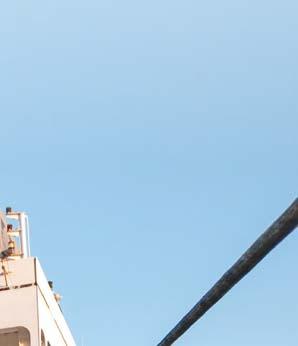




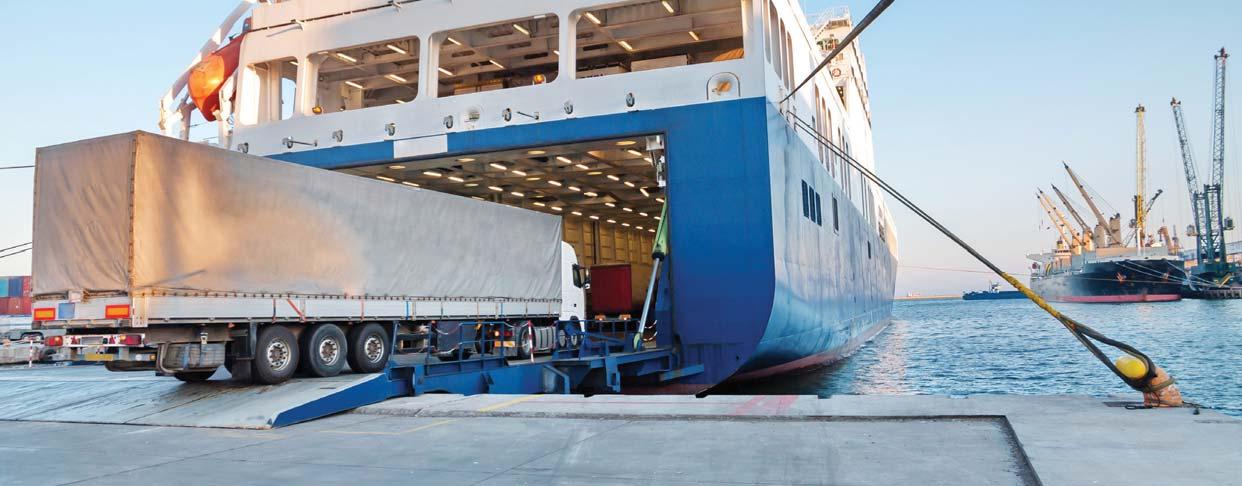
•
Book now and save 15%
TECHNOLOGY THE
MOTORSHIP MARINE
24 25 TO
APRIL Port of Amsterdam The Netherlands
ENERGY TRANSITION AMBITIONS
With the green light given to the Acorn carbon capture, usage and storage project and with opportunities building in conjunction with offshore wind, Peterhead Port plans to be a key player in energy transition. Felicity Landon sets the scene
Half a century ago, the north-east Scotland Port of Peterhead responded quickly to the emergence of the North Sea oil & gas industry – and it has been a vital offshore support hub ever since.
However, notwithstanding UK Prime Minister Rishi Sunak’s announcement of 100 new drilling licences, it’s clear that the drive for Net Zero together with economic viability questions around extracting from some remaining reserves means that production in the North Sea is set to decline.
Peterhead remains the UK’s largest fishing port and market – stocks have recovered, and landings and sales are at record highs. Fishing accounts for more than half of the port’s business. North Sea oil & gas production is not disappearing overnight but increasingly, something else will have to fill the oil & gas gap. And so, Peterhead Port Authority is set in a new direction – energy transition.
The port authority commissioned Royal HaskoningDHV to carry out a study into how Peterhead can be adapted and scaled up as a multi-sector port.
In April this year, more than 200 people attended ‘Peterhead Port: Embracing the Energy Transition Opportunity’, a day of presentations and discussions that focused on oil & gas decommissioning, offshore wind and renewables, carbon capture and storage, green hydrogen, and skills and employability.
REBOOTED ENERGY TRANSITION FORUM
The Peterhead Energy Transition Forum was rebooted as a result – pulling together 12 local supply chain companies, it is coordinated by the port authority’s Keith Mackie, Head of Business Development – Energy Transition.
“Peterhead certainly has a role to play in the UK’s decarbonisation,” says Simon Brebner, CEO, Peterhead Port Authority. “Aberdeenshire Council is 100 per cent supportive of the road we are forging and is a very close and valued partner.”

Welcoming government approval of the carbon capture project, he states: “We’re delighted that, finally, after many false dawns and a significant time delay, the Acorn project and the wider Scottish Cluster will now be able to get to work and help the country reach Net Zero.
“This is the opportunity for the north-east of Scotland –including the critical facilities at Peterhead Port – to lead the world in this new and innovative technology. Others have been catching up fast, but we have the skills, expertise and ingenuity to lead the field globally.”
Based at St Fergus, the Acorn CCUS scheme will be critical if the UK is to reach its net zero targets by 2050, he underlines. Part of a Scottish-wide cluster, the scheme would take emissions from the industrial heartland around Scotland’s Central Belt, including petrochemicals in Grangemouth, and from Peterhead Power Station, recognised as the biggest industrial polluter in Scotland.
When the St Fergus facility has been built, it will be able to receive CO2 by land, pipeline or sea – opening access to industrial clusters elsewhere. The plan sees the Port of Peterhead handling shipments of CO2 from around the UK coast and also mainland Europe. From St Fergus, CO2 will be
pumped permanently into depleted reservoirs 1.5 miles under the North Sea, making use of redundant oil & gas pipelines and equipment. The scheme includes proposals for local production of hydrogen and other low-carbon technologies. At Peterhead, the project is expected to make use of the former oil jetty on the southern side of the harbour, to accommodate CO2 vessels of up to 250 metres in length.
OFFSHORE WIND CONSTRUCTION BOOM
Meanwhile, the port is preparing for an offshore wind farm construction boom. The port has already built its experience supporting Equinor’s Hywind project, the first floating wind farm in the world, as well as the Moray East offshore wind farm. Many of the skills built up in serving the oil & gas sector are readily transferable to renewables.
This is the opportunity for the north-east of Scotland...
Simon Brebner, CEO, Peterhead Port Authority
Scotland’s latest round of INTOG (Innovation and Targeted Oil and Gas) offshore wind leases offers huge opportunities.
“When you look at the map for INTOG, for construction and O&M in the future, our ideal location is obvious,” points out Stephen Paterson, Chief Financial Officer, Peterhead Port Authority. “It is the same reasons that Peterhead developed to serve the oil & gas industry – our strategic location is worth a lot in terms of saving time, fuel, vessel costs and promoting overall efficiency.”
Peterhead has pushed hard to get to this point. In July, Brebner was among a delegation of energy sector leaders who attended a business summit hosted by local MP David Duguid in the House of Commons to discuss the challenges and opportunities that the energy transition can bring to the north-east of Scotland. Also attending was Stuart Payne, CEO of the North Sea Transition Authority, who noted: the scale of the prize with the energy transition is huge, and Peterhead can help to deliver it.
8 Carbon capture is on Peterhead’s agenda, as well as capitalising on offshore wind opportunities
PORT PROFILE: PETERHEAD
For the latest news and analysis go to www.portstrategy.com SEPTEMBER 2023 | 41
‘‘




















































































































NOW NEW FEATURES – GREATER OPPORTUNITIES 17 - 19 October 2023 Panama Convention Centre Events | Live & Digital Content | Networking Join the conversation online #TOCAmericas www.tocevents-americas.com
ifm electronic gmbh ifm is one of the world’s leading sensor companies in the automation of measurement and control, optimizing technical processes in almost all industries.


+49 201 24 22 0 info@ifm.com www.ifm.com
Telestack are a leading global manufacturer of equipment for the bulk material handling industry including Ship Loaders/Unloaders, Hopper Feeders, Truck Unloaders, Bulk Reception Feeders, Stockpiling Conveyors, Link Conveyors and Telescopic Stackers.

Tel: +44 (0)2882 251100
Email: sales@telestack.com www.telestack.comw
DELLNER DAMPERS AB

Customised damper and buffer solutions for container spreaders and ship-to-shore, rail mounted gantry and process crane’s. dampers protect the hydraulics’ and reduce noise. Our HYBUFF buffers protect operators and prevent damage in the event of an involuntary impact.
P.O. Box 51, SE-642 22, Sweden +46-(0)157-45 43 40 www.dellnerdampers.se/
Bedeschi S.p.A

For more than a century, Bedeschi is providing effective and reliable solutions in a wide variety of industries (bulk handling, marine logistics and mining), capitalizing on synergies and cross competences.

Via Praimbole 38, 35010 Limena (PD) – Italy
Tel: : +39 049 7663100
Fax: +39 049 8848006
Email: sales@bedeschi.com
Web: www.bedeschi.com
Over 60 years supporting Container Terminals in port operations: we create strategic

STS Portainer® and RTG Transtainer® cranes, services & Advanced Port Technologies.

PACECO® CORP.

World Headquarters
25503 Whitesell Street Hayward, CA 94545
Tel (510) 264-9288
email@pacecocorp.com
www.pacecocorp.com
SOLUTIONS
VAHLE PORT TECHNOLOGY
VAHLE is the leading specialist for mobile power and data transmission VAHLE provides the solutions to reduce the carbon footprint while increasing the productivity. RTGC electrification including positioning and data transmission making RTGC ready for Automation.

Westicker Str. 52, 59174 Kamen, Germany
Email: port-technology@vahle.de Web: www.vahle.com
11
The BEUMER Group is an international leader in the manufacture of bulk material handling systems:
Overland Conveyor
Pipe Conveyor
Stacker & Reclaimer
Shiploader
Tel.: +49 2521 240
E-mail: info@beumer.com

Web: www.beumer.com
Taylor Machine Works, Inc.
Taylor Machine Works designs, engineers, and manufactures more than 100 models of industrial lift equipment with lift capacities from ,000-lbs. to 125,000-lbs.
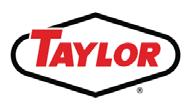
YOU CAN DEPEND ON BIG RED!
3690 N Church Avenue
Louisville, MS 39339 USA
+1 662 773 3421
www.taylorbigred.com
SAMSON Materials Handling Ltd specialises in the design and manufacture of mobile bulk materials handling equipment for surface installation across multiple industrial segments. Designed for rapid onsite set-up and continuous high performance SAMSON equipment provides an excellent return on investment.
SAMSON Materials Handling Ltd specialises in the design and manufacture of mobile bulk materials handling equipment for surface installation across multiple industrial segments. Designed for rapid onsite set-up and continuous high performance SAMSON equipment provides an excellent return on investment.
Gemini House Cambridgeshire Business Park,
Gemini House Cambridgeshire Business Park,
LASE Industrielle
Lasertechnik GmbH

LASE offers innovative and productive solutions for ports by combining state-of-the-art laser scanner devices and sophisticated software applications. We are specialised in the fully automated handling of containers, cranes or trucks.
Heavy duty rol e-chain® P4HD.56R
P4.1 e-chain®
Energy chain with optional intelligent wear monitoring for double the service life, travels of up to 1.000 m, speeds of up to 10 m/s and fill weights of up to 50 kg/m.
The new heavy-duty rol e-chain meets all the relevant requirements for container cranes of the next and next-but-one generations. Longer and longer travels, greater dynamics, short stress cycles, zero failures.
13 TO JUNE 2024 Southampton United Kingdom




igus® GmbH Spicher Str. 1a

D-51147 Köln, Germany Tel. +49-2203-9649-0 info@igus.eu igus.eu/P4.1
igus® GmbH Spicher Str. 1a, 51147 Köln, Germany Tel. +49-2203-9649-0 info@igus.eu igus.eu/P4.1
As one of the leading manufacturers of quick connector systems,Stäubli covers connection needs for all types of fluids, gases and electrical power.
Tel: +33 4 50 65 61 97 connectors.sales@staubli.com www.staubli.com/en-de/ connectors/

For more information visit: seawork.com contact: +44 1329 825335 or email: info@seawork.com

ShibataFenderTeam Group
SFT is the leading fender manufacturer with +60 years of group experience in the design of safety critical fender system that protect vessels, port infrastructure and people.

We offer the full range of customized fender solutions and maintain production facilities for high-quality rubber products, steel panels and foam fenders. Join the safe side.
contact@sft.group
www.sft.group
Rohde Nielsen A/S
Specialising in capital and maintenance dredging, land reclamation, coast protection, Port Development, Filling of Caissons, Sand and Gravel, Offshore trenching and backfilling
Nyhavn 20
Copenhagen K.
1 Bartholomew’s Walk, Ely
1 Bartholomew’s Walk, Ely Cambridgeshire CB7 4EA
Rudolf-Diesel-Str 111
DK-1051
Fogmaker develops, manufactures, and markets fire suppression systems for engine compartments with high pressure water mist. Fogmaker is a market leader for automated fire suppression systems with 200,000 installations in more than 50 countries since 1995.

England, United Kingdom (UK)
Cambridgeshire CB7 4EA
D-46485 Wesel, Germany
England, United Kingdom (UK)
Tel: +44 1353 665001
Fax: +44 1353 666734
Tel: +44 1353 665001
sales@samson-mh.com
sales@samson-mh.com
www.samson-mh.com
www.samson-mh.com
Tel: +49 (0) 281 - 9 59 90 - 0 info@lase.de www.lase.de
Denmark +45 33 91 25 07 mail@rohde-nielsen.dk www.rohde-nielsen.dk
Tel: +46 470 77 22 00 info@fogmaker.com www.fogmaker.com
PRODUCTS & SERVICES DIRECTORY
B ULK HANDLING C OMPONENTS D REDGING
Beumer Direc 2021 11:29 B ULK HANDLING
C ARGO HANDLING
C ARGO HANDLING EQUIPMENT
SYSTEMS
#WeHaveTonnesToTellYouAbout Telestack Directory June 2021 indd 1 26/05/2021 12:20 E LECTRIFICATION
A UTOMATION
TECHNOLOGY
Staubli Directory Mar 2021 indd 1 25/02/2021 15:49 C ONNECTION SOLUTIONS For the latest news and analysis go to www.portstrategy.com SEPTEMBER 2023 | 43
Fogmaker Directory indd 1 01/02/2021 13:12 F IRE SUPPRESSION
F ENDER
SYSTEMS
SOLUTIONS
Seawork directory indd 1 25/07/2023 11:27
MRS Greifer GmbH


Grabs of MRS Greifer are in use all over the world. They are working reliably and extremely solid. All our grabs will be made customized. Besides the production of rope operated mechanical grabs, motor grabs and hydraulic grabs we supply an excellent after sales service.
Talweg 15-17, Helmstadt-Bargen 74921, Germany
Tel: +49 (0)7263 - 91 29 0
Fax: +49 (0)7263 - 91 29 12 info@mrs-greifer.de www.mrs-greifer.de
Orts GMBH Maschinenfabrik
Over 40 years experience constructing and manufacturing a wide range of grabs, including electro-hydraulic grabs (with the necessary crane equipment) radio controlled diesel hydraulic grabs, 4, 2 and single rope grabs all suitable for bulk cargo.

Schwartauer Str. 99
D-23611 Sereetz • Germany
Tel:+49 451 398 850
Fax: +49 451 392 374 soj@orts-gmbh.de www.orts-grabs.de

To advertise in the Port Strategy Directory Contact Arrate Landera +44 1329 825335











www.portstrategy.com
For more information visit: seawork.com contact: +44 1329 825335 or email: info@seawork.com
Künz GmbH
Founded in 1932, Künz is now the market leader in intermodal rail-mounted gantry cranes in Europe and North America, offering innovative and efficient solutions for container handling in intermodal operation and automated stacking cranes for port and railyard operations.
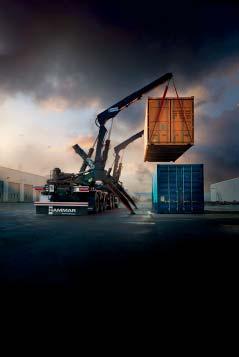
Gerbestr. 15, 6971 Hard, Austria
T: +43 5574 6883 0 sales@kuenz.com www.kuenz.com
SANY Europe GmbH

offers a broad spectrum of high-performance mobile port machines such as Reach Stacker, Empty Container Handler, Heavy Duty Forklift Trucks and Material Handler
Conductix-Wampfler
TO JUNE 2024 Southampton United Kingdom






Sany Allee 1
Sany Allee 1 50181 Bedburg, Germany
D-50181 Bedburg
Tel: +49 2272 90531 100
Tel: +49 2272 90531 100
Email: info@sanyeurope.com
Email: info@sanyeurope.com www.sanyeurope.com
www.sanyeurope.com
Sany ID indd 1 25/01/2022 11:42






VISYOy
Visy systems reduce expenses, optimize safety & security, and increase throughput capacity via process automation. Our singleplatform gate operating system and OCR solutions manage all cargo, assets & personnel movements via quay, rail or road to keep operations moving.
VISY takes pride in solving operational problems, specialising in gate automation and access control solutions in ports and terminals. Their solutions streamline processes resulting in saving money and increasing productivity. Tel
The world specialist in Power and Data Transfer Systems, Mobile Electrification, and Crane Electrification Solutions. We Keep Your Vital Business Moving!
Rheinstrasse 27 + 33 Weil am Rhein 79576 Germany
Tel: +49 (0) 7621 662 0
Fax: +49 (0) 7621 662 144 info.de@conductix.com
www.conductix.com

To advertise in the Port Strategy Directory
Contact Arrate Landera +44 1329 825335
www.portstrategy.com
IDENTEC SOLUTIONS

is an industry-leading, trusted partner in managing and monitoring reefer containers and optimizing entire terminal operations through solutions like Reefer Runner and Terminal Tracker.
Contact: Stephan Piworus, Global VP Sales Marine & Ports, spiworus@identecsolutions.com; Mobile: +49 151 74122606 www.identecsolutions.com

11 13 TO
2024 Southampton
The world leading manufacturer of Sideloaders, self-loading semi-trailers for versatile & efficient container handling.
www.hammarlift.com
info@hammarlift.com
TVH is a global player in the field of spare parts and accessories for heavy forklifts, reach stackers, container handlers, spreaders and terminal tractors. With over 96,000 references in stock and more than 644,000 known references, TVH offers quality replacement parts for many brands and makes, including the hard-to-find ones.
Tel: +44 2476 585 000 sales.team.uk@tvh.com www.tvh.com

PRODUCTS & SERVICES DIRECTORY 44 | SEPTEMBER 2023For the latest news and analysis go to www.portstrategy.com
H ANDLING EQUIPMENT I NSURANCE P ORT AUTOMATION S IDELIFTER/SIDELOADER TT Club Directory March 2021 indd 1 01/03/2021 14:40 I TPORT
AUTOMATION
: +358 3 211 0403 Email: sales@visy.fi Web: www visy fi/
P OWER TRANSMISSION
R EFRIGERATED TRANSPORT S PARE
PARTS
G RABS
Reefer Monitoring Solutions Visit us at: rte-usa.com New York | Panama
Seawork directory indd 1 25/07/2023 11:27
11 13 TO JUNE 2024 Southampton United Kingdom
JUNE
For more information visit: seawork.com contact: +44 1329 825335 or email: info@seawork.com United Kingdom Seawork directory indd 1 25/07/2023 11:27
13
For more information visit: seawork.com contact: +44 1329 825335 or email: info@seawork.com Seawork directory indd 1 25/07/2023 11:27
11
ELME Spreader AB

ELME Spreader, world’s leading independent spreader manufacturer supports companies worldwide with container handling solutions that makes work easier and more profitable. Over 21,000 spreaders have been attached to lift trucks, reach stackers, straddle carriers and cranes.

Stalgatan 6 , PO Box 174
SE 343 22, Almhult, Sweden
Tel: +46 47655800
Fax: +46 476 55899 sales@elme.com www.elme.com
T ERMINAL OPERATIONS SYSTEMS
The Brain of Logistics
With more than 30 years experience in IT Solutions and Business Operation Consultancy DSP offers a large portfolio of professional services and products to support terminal operations processes and system.
DSP Data and System Planning SA
Via Cantonale 38
6928 Manno, Switzerland
Tel: +41 91 230 27 20
Fax: +41 91 230 27 31 info@dspservices.ch www.dspservices.ch

Solvo Europe B.V.
Solvo’s software solutions such as TOS or WMS help container and general cargo terminals take full care of their cargo handling processes and make sure the clients expectations are exceeded.
Prinses Margrietplantsoen 33, 2595AM, The Hague, The Netherlands

Tel: +31 (0) 702-051-709




Email: sales@solvosys.com www.sovosys.com
ERMINAL OPERATIONS SYSTEMS
Tideworks Technology provides comprehensive terminal operating system solutions for marine and intermodal terminal operations worldwide. Tideworks works at every step of terminal operations to maximize productivity and customer service.



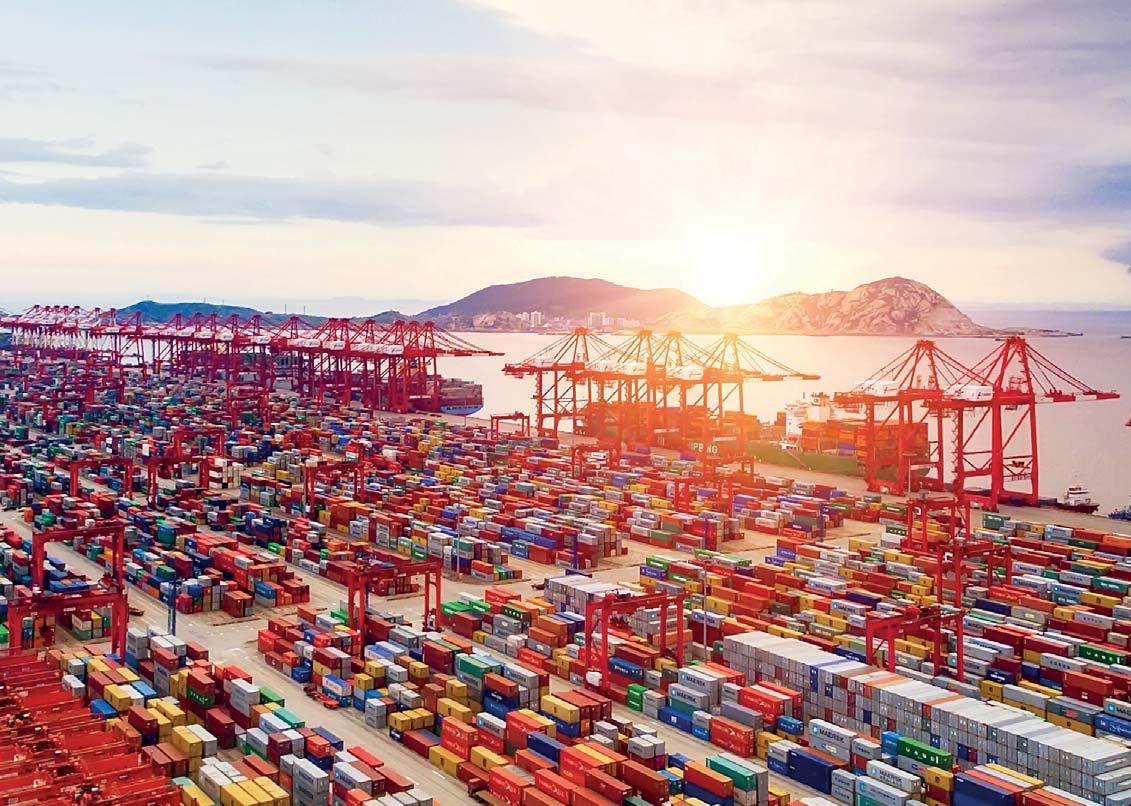

info@tideworks.com +1 206 382 4470 www.tideworks.com
TGI Maritime Software is a Terminal Operating System editor and integrator specialized in the support of Small to Medium Terminals. Its expertise is built on 34 years of experience within the maritime sector. TGI provides comprehensive services to its customers all along their projects. OSCAR TOS and CARROL TOS have already been successfully handled by 40 container and RoRo terminals worldwide.
Tel : +33 (0)3 28 65 81 91 contact@tgims.com www.tgims.com
MAFI Transport-Systeme GmbH
Specialised in the development and production of heavy-duty equipment for transporting containers, semi-trailers, cargo/roll trailers and special container chassis in ports and industry.

Hochhäuser Str 18 97941 Tauberbischofsheim, Germany
Tel: +49 9341 8990 sales@mafi.de www.mafi.de
Brunton Shaw UK is a successful manufacturer of high quality wire ropes for a wide range of applications. The company effectively combines more than 130 years of experience and tradition with an up to the minute range of products, and a customer service package ideal for the modern market place.
Tel: +44 1909 537626
Email: info@brunton-shaw.co.uk
www.brunton-shaw.com
PRODUCTS & SERVICES DIRECTORY
S
T ERMINAL
PREADERS
OPERATIONS SYSTEMS
T
RACTORS
T
w
Visit portstrategy.com Email subscriptions@mercatormedia.com Or Call +44 1329 825335 For multiple users or site access, email corporatesubs@mercatormedia.com port and terminal professionals around the world Informing over To guarantee your magazine SUBSCRIBE NOW needs of our audience. Subscribe today! • Instant access to industry news • Expert opinion • Monthly features • Weekly eNewsletter • 10 editions per year CONTACT DETAILS: DIGITAL: TALKING THE SAME LANGUAGE ACCESS ALL CONTENT! ANNUAL SUBSCRIPTIONS AVAILABLE FROM £228 PS Subs Had HP (2023) indd indd 1 01/06/2023 08:14 For more information visit: seawork.com contact: +44 1329 825335 or email: info@seawork.com 11 13 TO JUNE 2024 Southampton United Kingdom Seawork directory indd 1 25/07/2023 11:27
IRE ROPES
BRIDGING THE CAPACITY GAP
What seems like day after day we hear of new container vessel orders and new commentaries on the record size of annual order books. What is remarkable about this is that this is in an environment when actual and forecast container demand is not at its healthiest, with freight rates falling commensurately and pushed to bargain basement levels on certain trades as a result of growing competition between liner operators. But still the new orders keep coming – notably recently, 24 methanol fuelled 16,000TEU vessels for Evergreen and 10 LNG dual-fuel 11,500TEU vessels for MSC.
At the end of June, Alphaliner forecast that a total of 385 vessels totalling 2.22m TEU capacity will be delivered over the course of 2023. For 2024, an even higher figure is forecast of 391 vessels offering a combined capacity of nearly three million TEU.
How will all this new capacity be absorbed is a key question?
As indicated, large parts of the world are beset by what amounts to stagnant trading conditions, although there are some healthier regions such as Southeast Asia. Nevertheless, the point stands that with global fleet capacity now already up at around 26 million TEU it is not going to be an easy task to accommodate all the booked new vessel capacity.
There is the proposition that an uplift in demand will help – for example, one forecast from BIMCO foresees head-haul and regional trade demand growth of 1-2 per cent in 2023 followed by 5-6 per cent in 2024. Effectively, negative y/y growth through the first half of 2023 but a return to growth thereafter. Against such a scenario, however, BIMCO acknowledges that risks remain and accordingly it also presents a downside scenario of growth of 0 -1 per cent and 2.5 – 3.5 per cent in 2023 and 2024 respectively.
For its part, the IMF predicts global GDP growth of 2.9 per cent in 2023 and 3.1 per cent in 2024 but underlines the balance of risks remain weighted on the downside.
In short, there is no certainty of positive growth and certainly not enough momentum to fill the gap between demand and available capacity in the short term.
So what other solutions are there, if any?
OTHER SOLUTIONS
There is the proposition that against a background of
factors such as the implementation of the EU Emissions Trading Scheme there will be a significant uplift in container vessel scrappage, possibly with some vessels with an operational life as low as 15 years. There are some signs of an uptick with owners such as MSC and Wan Hai offloading old tonnage for demolition but there is not a flood as yet, although there are those that do believe this could happen. There will inevitably be cascading of vessels with newer, larger tonnage pushing older vessels into secondary trade lanes, for example, in conjunction with Latin American and Australasian services. Indeed, there are already indicators that this trend is underway with various ports progressing dredging, infrastructure and terminal projects to accommodate the anticipated larger tonnage or in some cases to catch up with events which have already overtaken them.

A lowering of the operational speed of vessels may help a little plus exceptional factors such as congestion in the Panama Canal but in real terms these will be lower scale contributions to bridging the demand/capacity gap. With speed, BIMCO notes: “While average sailing speed has decreased following the reduction in congestion there is so far no evidence of the structural shift downwards due to EEXI/CII that had been previously indicated by major liner operators. We therefore predict that changes will be gradually phased in during 2023 and 2024.”
Last but not least, there will be little in the way of a contribution to achieving a good demand-capacity balance from major container penetration advances. In general terms, there are no large scale market areas left to penetrate that can soak up huge tranches of capacity. Those days are gone.
Looked at against this overall background, the tactic of major shipping lines diversifying their business interests as per Maersk and its integrator approach, and others heading in a similar direction, does appear to have some merit. It’s early days yet, however, lets see how the diversified major operators fare in an extended period of tough trading conditions, which appear to be on the agenda over the remainder of this year at the very least.
POST
8 Sector consolidation by liner operators is also now largely off the agenda as a means of helping bridge the demand-capacity gap – most of the deals have been done (the Hamburg Sud brand will soon disappear, absorbed under the Maersk banner)
SCRIPT
‘‘
Excepting some hot spots, such as Southeast Asia, container trade is generally experiencing tough market conditions making the task of bridging the gap between container vessel capacity –actual and on order – more than challenging. There are actions that can reduce the scale of the problem but seemingly not one big ‘lifesaver’
46 | SEPTEMBER 2023 For the latest news and analysis go to www.portstrategy.com
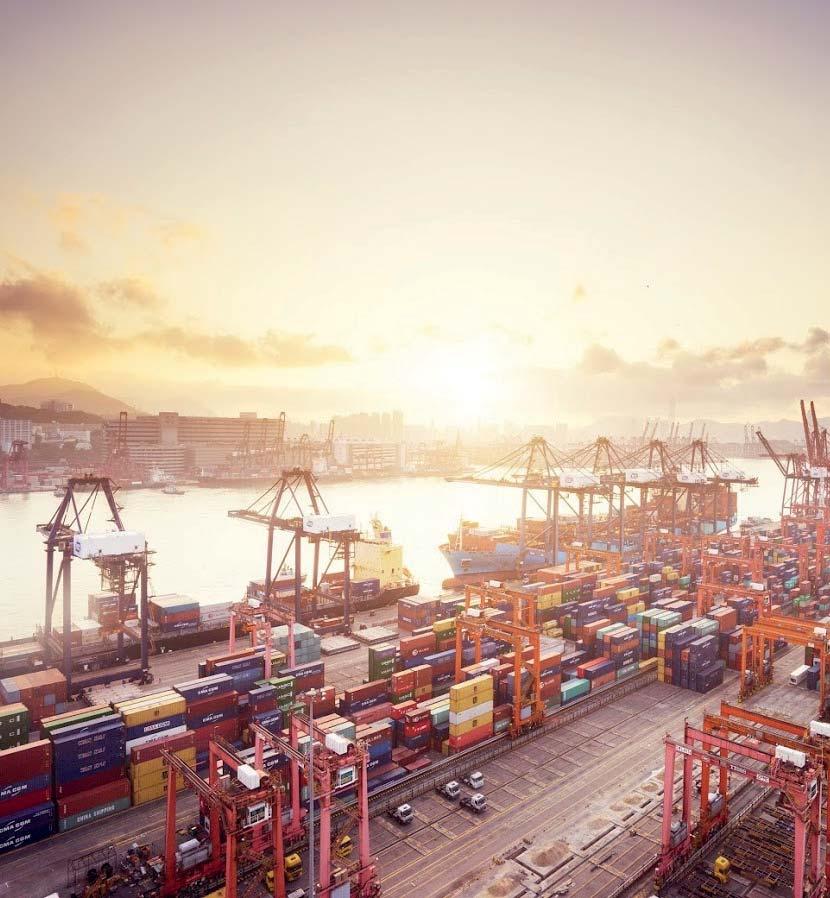
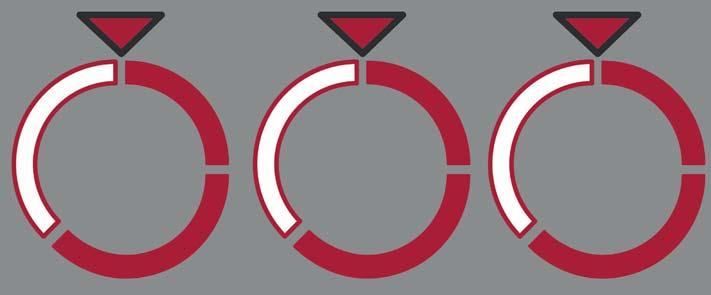
Arrate Landera, Brand Manager t: (+44) 1329 825 335 e: sales@portstrategy.com www.portstrategy.com Contact us today PORTSTRATEGY INSIGHT FOR PORT EXECUTIVES MAGAZINE RECIPIENTS DECISION MAKERS PAGEVIEWS PER MONTH 17,80072%36,240 Reach industry professionals with Port Strategy Promote your business to the right audience in the right place at the right time. Engage with our international audience of decision makers and buyers. The Port opportunities for campaign delivery. We provide bespoke marketing packages Port Strategy’s valued content is dedicated to the international ports and terminals business and is delivered through multiple channels.


















44TH 23 TO NOV 3 21 Hamburg Germany Propulsion stream | Alternative fuels stream | Technical visit Meet and network with 200 CEOs and technical directors from ship owning, operating and management policy makers, shipbuilding, fuel, equipment and technology suppliers. Visit: motorship.com/PFFBOOK Contact: +44 1329 825335 Email: conferences@propulsionconference.com #MotorshipPFF Keynote panel topic: The cost of decarbonisation & who is going to pay? Topics to discuss with the keynote panel will include carbon levy funding, funding for investment, national incentives, funding for new technology & hypothecation. Programme out now - Book now and save 20%
Safety challenges for new technology LNG beyond transition Carbon capture Advances in lubrication
shipping’s emissions-cutting ambitions Gain insight from industry experts on: MOTORSHIP MARINE TECHNOLOGY THE Media partner: Media supporters:
Learn from C-suite keynote panel
Powering
MODERATOR
Lars Robert Pedersen, Deputy Secretary General, BIMCO
Annika Kroon, Head of Unit, Directorate General for Mobility and Commission
Simon Bennett, Deputy Secretary General, International Chamber of Shipping
Martin Kröger, Shipowners’ Association (VDR)
Wolfram Guntermann, Director Regulatory Lloyd AG
Supported by: Sponsored by:
Markus Münz, Managing Director, VDMA Large























 MIKE MUNDY
MIKE MUNDY
























































































































































































































